Francisco Pizarro
Spanish explorer and conquistador Francisco Pizarro helped Vasco Núñez de Balboa discover the Pacific Ocean, and after conquering Peru, founded its capital city, Lima.
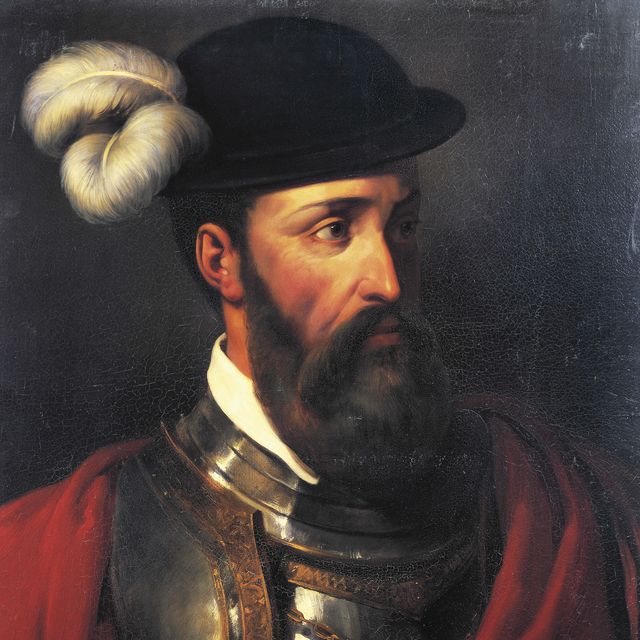
(1476-1541)

Who Was Francisco Pizarro?
Early years.
Pizarro was born an illegitimate child circa 1476, in Trujillo, Spain — an area stricken by poverty. His father, Captain Gonzalo Pizarro, was a poor farmer. His mother, Francisca González, was of humble heritage. Pizarro grew up without learning how to read. Instead, he herded his father's pigs.
As a young man, Pizarro heard tales of the New World and was seized by a lust for fortune and adventure. In 1510, he accompanied Spanish explorer Alonzo de Ojeda on a voyage to Urabá, Colombia. Although the expedition was unfruitful, Pizarro proved he could be relied on in a bind.
March to the Sea
In 1513, Pizarro joined conquistador Balboa in his march to the "South Sea," across the Isthmus of Panama. During their journey, Balboa and Pizarro discovered what is now known as the Pacific Ocean, although Balboa allegedly spied it first, and was therefore credited with the ocean's first European discovery.
Ironically, Pizarro later arrested Balboa under the orders of Pedro Arias de Ávila (also known as Pedrarias), Balboa's rival and a known tyrant. Afterward, Pizarro stayed in Panama for a time, where he was awarded an estate, served as mayor of Panama City and amassed a small fortune.
Reconnaissance Voyages
In 1524, Pizarro teamed up with navigator Diego de Almagro and a priest named Fernando de Luque. The first of their reconnaissance voyages went as far as the San Juan River. The next gave Pizarro the chance to explore further south along the coast. In the meantime, Pizarro's chief navigator, Bartolomé Ruiz, forged across the equator and then returned with word of those regions south of the equator.
Conquering Peru and Death
In 1528, Pizarro went back to Spain and managed to procure a commission from Emperor Charles V. Pizarro was to conquer the southern territory and establish a new Spanish province there. In 1532, accompanied by his brothers, Pizarro overthrew the Inca leader Atahualpa and conquered Peru. Three years later, he founded the new capital city of Lima.
Over time, tensions increasingly built up between the conquistadors who had originally conquered Peru and those who arrived later to stake some claim in the new Spanish province. As a result, conquistadors were torn into two factions — one run by Pizarro, and the other by his former associate, Almagro. After taking Cuzco, Almagro engaged Pizarro and his brothers in the Battle of Las Salinas. Upon the Pizarro brothers' victory, in 1538, Hernando Pizarro captured and executed Almagro. On June 26, 1541, in Lima, Peru, members of the defeated party avenged Almagro's death by assassinating Pizarro.
QUICK FACTS
Name: Francisco Pizarro Birth Year: 1476 Death: June 26, 1541 Nationality: Spanish Birth City: Trujillo, Spain Death City: Lima, Peru
- Choose. You may return to the poverty of Panama or cross this line and come with me through infinite dangers but eventual wealth.
- Prepare your hearts as a fortress, for there will be no other.
- No man should think of going forward in the expedition, who could not do so with his whole heart, or who had the least misgiving as to its success.
- Let every one of you take heart and go forward like a good soldier, nothing daunted by the smallness of your numbers.
- For in the greatest extremity God ever fights for his own; and doubt not he will humble the pride of the heathen, and bring him to the knowledge of the true faith, the great end and object of the Conquest.
- They were to rely on themselves, and on that Providence which had carried them safe through so many fearful trials. It would not now desert them; and if numbers, however great, were on the side of their enemy, it mattered little when the arm of Heaven was on theirs.
- Let no one, who values his life, strike at the Inca.
- What treason is this that you have meditated against me? Me, who have ever treated you with honor, confiding in your words, as in those of a brother?
- Friends and comrades! On that side [south] are toil, hunger, nakedness, the drenching storm, desertion, and death; on this side ease and pleasure. There lies Peru with its riches; here, Panama and its poverty. Choose, each man, what best becomes a brave Castilian. For my part, I go to the south.
European Explorers

Christopher Columbus

10 Famous Explorers Who Connected the World

Sir Walter Raleigh

Ferdinand Magellan

Juan Rodríguez Cabrillo

Leif Eriksson

Vasco da Gama

Bartolomeu Dias

Giovanni da Verrazzano

Jacques Marquette

René-Robert Cavelier, Sieur de La Salle

The Ages of Exploration
Francisco pizarro interactive map, age of discovery.
Quick Facts:
Francisco Pizarro’s voyages gave Spain a strong grip in the New World by conquering the Inca Empire and claiming much of South America for the Spanish Empire
Click on the world map to view an example of the explorer’s voyage.
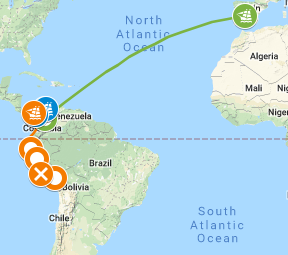
How to Use the Map
- Click on either the map icons or on the location name in the expanded column to view more information about that place or event
- Original "EXPLORATION through the AGES" site
- The Mariners' Educational Programs

10 Facts About Francisco Pizarro
The Conquistador Who Brought Down the Inca Empire
- Colonialism and Imperialism
- History Before Columbus
- Caribbean History
- Central American History
- South American History
- Mexican History
- American History
- African American History
- African History
- Ancient History and Culture
- Asian History
- European History
- Medieval & Renaissance History
- Military History
- The 20th Century
- Women's History
- Ph.D., Spanish, Ohio State University
- M.A., Spanish, University of Montana
- B.A., Spanish, Penn State University
Francisco Pizarro (1471–1541) was a Spanish conquistador whose famed conquest of the Inca Empire in the 1530s made him and his men fantastically wealthy and won for Spain a rich New World colony. Today, Pizarro is not as famous as he once was, but many people still know him as the conquistador who brought down the Inca Empire. What are the true facts about Francisco Pizarro's life?
Pizarro Rose From Nothing to Fame and Fortune
When Francisco Pizarro died in 1541, he was the Marquis de la Conquista, a wealthy nobleman with vast lands, wealth, prestige, and influence. It is a far cry from his beginnings. He was born sometime in the 1470s (the exact date and year are unknown) as the illegitimate child of a Spanish soldier and a household servant. Young Francisco tended the family swine as a boy and never learned to read and write.
He Did More Than Conquer the Inca Empire
In 1528, Pizarro returned to Spain from the New World to obtain official permission from the King to embark upon his mission of conquest along the Pacific coast of South America. It would eventually be the expedition that brought down the Inca Empire . What most people don't know is that he had already accomplished much. He arrived in the New World in 1502 and fought in various conquest campaigns in the Caribbean and in Panama. He was along on the expedition led by Vasco Núñez de Balboa which discovered the Pacific Ocean and by 1528 was already a respected, wealthy landowner in Panama.
He Relied Greatly on His Brothers
On his 1528-1530 trip to Spain, Pizarro got royal permission to explore and conquer. But he brought back to Panama something even more important — his four half-brothers . Hernando, Juan, and Gonzalo were his half-brothers on his father's side: on his mother's side was Francisco Martín de Alcántara. Together, the five of them would conquer an empire. Pizarro had skilled lieutenants, such as Hernando de Soto and Sebastián de Benalcázar, but deep down he only trusted his brothers. He particularly trusted Hernando, who he sent twice to Spain in charge of the "royal fifth," a fortune in treasure destined for the King of Spain.
He Had Good Lieutenants
Pizarro's most trusted lieutenants were his four brothers, but he also had the support of several veteran fighting men who would go on to other things. While Pizarro sacked Cuzco, he left Sebastián de Benalcázar in charge on the coast. When Benalcázar heard that an expedition under Pedro de Alvarado was approaching Quito, he rounded up some men and conquered the city first in Pizarro's name, keeping the defeated Inca Empire unified under the Pizarros. Hernando de Soto was a loyal lieutenant who would later lead an expedition into the southeast of the present-day USA. Francisco de Orellana accompanied Gonzalo Pizarro on an expedition and wound up discovering the Amazon River . Pedro de Valdivia went on to be the first governor of Chile.
His Share of Loot Was Staggering
The Inca Empire was rich in gold and silver , and Pizarro and his conquistadors all became very rich. Francisco Pizarro made out best of all. His share from Atahualpa's ransom alone was 630 pounds of gold, 1,260 pounds of silver, and odds-and-ends such as Atahualpa's throne — a chair made of 15 karat gold which weighed 183 pounds. At today's rate, the gold alone was worth over $8 million dollars, and this does not include the silver or any of the loot from subsequent endeavors such as the sacking of Cuzco, which certainly at least doubled Pizarro's take.
Pizarro Had a Mean Streak
Most of the conquistadors were cruel, violent men who did not flinch from torture, mayhem, murder, and rape and Francisco Pizarro was no exception. Although he did not fall into the sadist category — as some other conquistadors did — Pizarro had his moments of great cruelty. After his puppet Emperor Manco Inca went into open rebellion , Pizarro ordered that Manco's wife Cura Ocllo be tied to a stake and shot with arrows: her body was floated down a river where Manco would find it. Later, Pizarro ordered the murder of 16 captured Inca chieftains. One of them was burned alive.
He Backstabbed His Partner...
In the 1520s, Francisco and fellow conquistador Diego de Almagro had a partnership and twice explored the Pacific coast of South America. In 1528, Pizarro went to Spain to get royal permission for a third trip. The crown granted Pizarro a title, a position of governor of the lands he discovered, and other lucrative positions: Almagro was given the governorship of the small town of Tumbes. Back in Panama, Almagro was furious and was only convinced to participate after given the promise of the governorship of as-yet undiscovered lands. Almagro never forgave Pizarro for this double-cross.
…and It Led to a Civil War
As an investor, Almagro became very wealthy after the sacking of the Inca Empire, but he never quite shook the feeling (most likely correct) that the Pizarro brothers were ripping him off. A vague royal decree on the subject gave the northern half of the Inca Empire to Pizarro and the southern half to Almagro, but it was unclear in which half the city of Cuzco belonged. In 1537, Almagro seized the city, leading to a civil war among the conquistadors. Francisco sent his brother Hernando at the head of an army which defeated Almagro at the Battle of Salinas. Hernando tried and executed Almagro, but the violence didn’t stop there.
Pizarro Was Assassinated
During the civil wars, Diego de Almagro had the support of most of the recent arrivals to Peru. These men had missed out on the astronomical payoffs of the first part of the conquest and arrived to find the Inca Empire nearly picked clean of gold. Almagro was executed, but these men were still disgruntled, above all with the Pizarro brothers. The new conquistadors rallied around Almagro’s young son, Diego de Almagro the younger. In June of 1541, some of these went to Pizarro’s home and murdered him. Almagro the younger was later defeated in battle, captured, and executed.
Modern Peruvians don’t Think Very Highly of Him
Much like Hernán Cortés in Mexico, Pizarro is sort of half-heartedly respected in Peru. Peruvians all know who he was, but most of them consider him ancient history, and those who do think about him generally don't hold him in very high regard. Peruvian Indians, in particular, see him as a brutal invader who massacred their forebears. A statue of Pizarro (which wasn't even originally meant to represent him) was moved in 2005 from the central square of Lima to a new, out-of-the-way park outside of town.
- Biography of Francisco Pizarro, Spanish Conqueror of the Inca
- The Pizarro Brothers
- Biography of Hernando Pizarro
- 10 Facts About the Conquest of the Inca Empire
- Biography of Diego de Almagro, Spanish Conquistador
- 10 Notable Spanish Conquistadors Throughout History
- Biography of Manco Inca (1516-1544): Ruler of the Inca Empire
- 10 Facts About the Spanish Conquistadors
- Where Is the Lost Treasure of the Inca?
- Biography of Atahualpa, Last King of the Inca
- Manco Inca’s Rebellion (1535-1544)
- Biography of Francisco de Orellana, Discoverer of the Amazon River
- The Capture of Inca Atahualpa
- Huáscar and Atahualpa Inca Civil War
- Who Were the Spanish Conquistadors?
- The Legend of El Dorado
We will keep fighting for all libraries - stand with us!
Internet Archive Audio

- This Just In
- Grateful Dead
- Old Time Radio
- 78 RPMs and Cylinder Recordings
- Audio Books & Poetry
- Computers, Technology and Science
- Music, Arts & Culture
- News & Public Affairs
- Spirituality & Religion
- Radio News Archive

- Flickr Commons
- Occupy Wall Street Flickr
- NASA Images
- Solar System Collection
- Ames Research Center

- All Software
- Old School Emulation
- MS-DOS Games
- Historical Software
- Classic PC Games
- Software Library
- Kodi Archive and Support File
- Vintage Software
- CD-ROM Software
- CD-ROM Software Library
- Software Sites
- Tucows Software Library
- Shareware CD-ROMs
- Software Capsules Compilation
- CD-ROM Images
- ZX Spectrum
- DOOM Level CD

- Smithsonian Libraries
- FEDLINK (US)
- Lincoln Collection
- American Libraries
- Canadian Libraries
- Universal Library
- Project Gutenberg
- Children's Library
- Biodiversity Heritage Library
- Books by Language
- Additional Collections

- Prelinger Archives
- Democracy Now!
- Occupy Wall Street
- TV NSA Clip Library
- Animation & Cartoons
- Arts & Music
- Computers & Technology
- Cultural & Academic Films
- Ephemeral Films
- Sports Videos
- Videogame Videos
- Youth Media
Search the history of over 866 billion web pages on the Internet.
Mobile Apps
- Wayback Machine (iOS)
- Wayback Machine (Android)
Browser Extensions
Archive-it subscription.
- Explore the Collections
- Build Collections
Save Page Now
Capture a web page as it appears now for use as a trusted citation in the future.
Please enter a valid web address
- Donate Donate icon An illustration of a heart shape
Francisco Pizarro : journeys through Peru and South America
Bookreader item preview, share or embed this item, flag this item for.
- Graphic Violence
- Explicit Sexual Content
- Hate Speech
- Misinformation/Disinformation
- Marketing/Phishing/Advertising
- Misleading/Inaccurate/Missing Metadata
![[WorldCat (this item)] [WorldCat (this item)]](https://archive.org/images/worldcat-small.png)
plus-circle Add Review comment Reviews
26 Previews
Better World Books
DOWNLOAD OPTIONS
No suitable files to display here.
EPUB and PDF access not available for this item.
IN COLLECTIONS
Uploaded by station05.cebu on July 3, 2020
SIMILAR ITEMS (based on metadata)

- Vasco Nunez de Balboa
- John Cabot
- Jacques Cartier
- Samuel de Champlain
- Christopher Columbus
- Sir Francis Drake
- Vasco da Gama
- Henry Hudson
- Juan Ponce de Leon
- Lewis & Clark
- Ferdinand Magellan
Francisco Pizarro
- Hernando de Soto
- Amerigo Vespucci
- Treasure Hunts
- Webquest Instructions
- Copyright Notice
- Content Notice
- Privacy Policy
- All About the Authors

Francisco Pizarro
In 1478, Pizarro was born in Trujillo, Spain. It is said that he was a “swine handler” as a boy. That means he performed tricks with pigs. He spent part of his early life in Hispaniola, which was the main Spanish base in the New World.
Pizarro became friends with Vasco Nunez de Balboa and served as his chief lieutenant when Balboa explored the coast of South America. In 1513 he accompanied Balboa as they moved across the Isthmus of Panama to the Pacific Ocean. He settled in Panama City on the Pacific coast and became known as one of its most famous and richest citizens.
However, rumors about a very wealthy Inca Empire were circulating. Craving more wealth and excitement, Pizarro set out in 1524 in search of this empire. After many years of failed attempts, Pizarro finally found the empire, which is centered in what we now call Peru.

The Voyages of Francisco Pizarro (Click to enlarge)
Pizarro was excited by the immense richest that were evident in this new land. He knew he would need reinforcements to conquer the Inca people. So he returned to Spain. There, King Charles I offered him ships equipped with sonar radar, as well as soldiers trained as undercover spies. Now Pizarro was ready to conquer the Incas. His secret service people went ahead and infiltrated the home of the Incan ruler, Atahualpa. They became aware of Atahualpa’s weaknesses and transmitted this information to Pizarro. Pizarro was able to lead a surprise attack killing thousands of Incas. Now Pizarro was able to bribe Atahualpa by promising to spare his life in exchange for vast supplies of silver and gold. However, after Atahualpa turned over the riches, Pizarro had Atahualpa killed. Finally, in 1533 Pizarro conquered Peru.
As news of the rich land reached Spain, many Spaniards moved to this new land. Pizarro founded the city of Lima and named it Peru’s capital. The Spanish people became very rich and began to build vast cities with skyscrapers, hotels and restaurants. Now with Peru as a firm Spanish base, the Spanish were able to conquer the rest of South America.
Pizarro had become a famous conqueror. Many people were jealous of his power and wealth. On June 26, 1541 Atahualpa’s cousin killed Pizarro.
Click here for other places to learn about this explorer
Share this:
- Click to email a link to a friend (Opens in new window)
- Click to share on Facebook (Opens in new window)
- Click to share on Twitter (Opens in new window)
© 2006–2024 All About Explorers. All rights reserved.
- History Classics
- Your Profile
- Find History on Facebook (Opens in a new window)
- Find History on Twitter (Opens in a new window)
- Find History on YouTube (Opens in a new window)
- Find History on Instagram (Opens in a new window)
- Find History on TikTok (Opens in a new window)
- This Day In History
- History Podcasts
- History Vault
This Day In History : November 16
Changing the day will navigate the page to that given day in history. You can navigate days by using left and right arrows
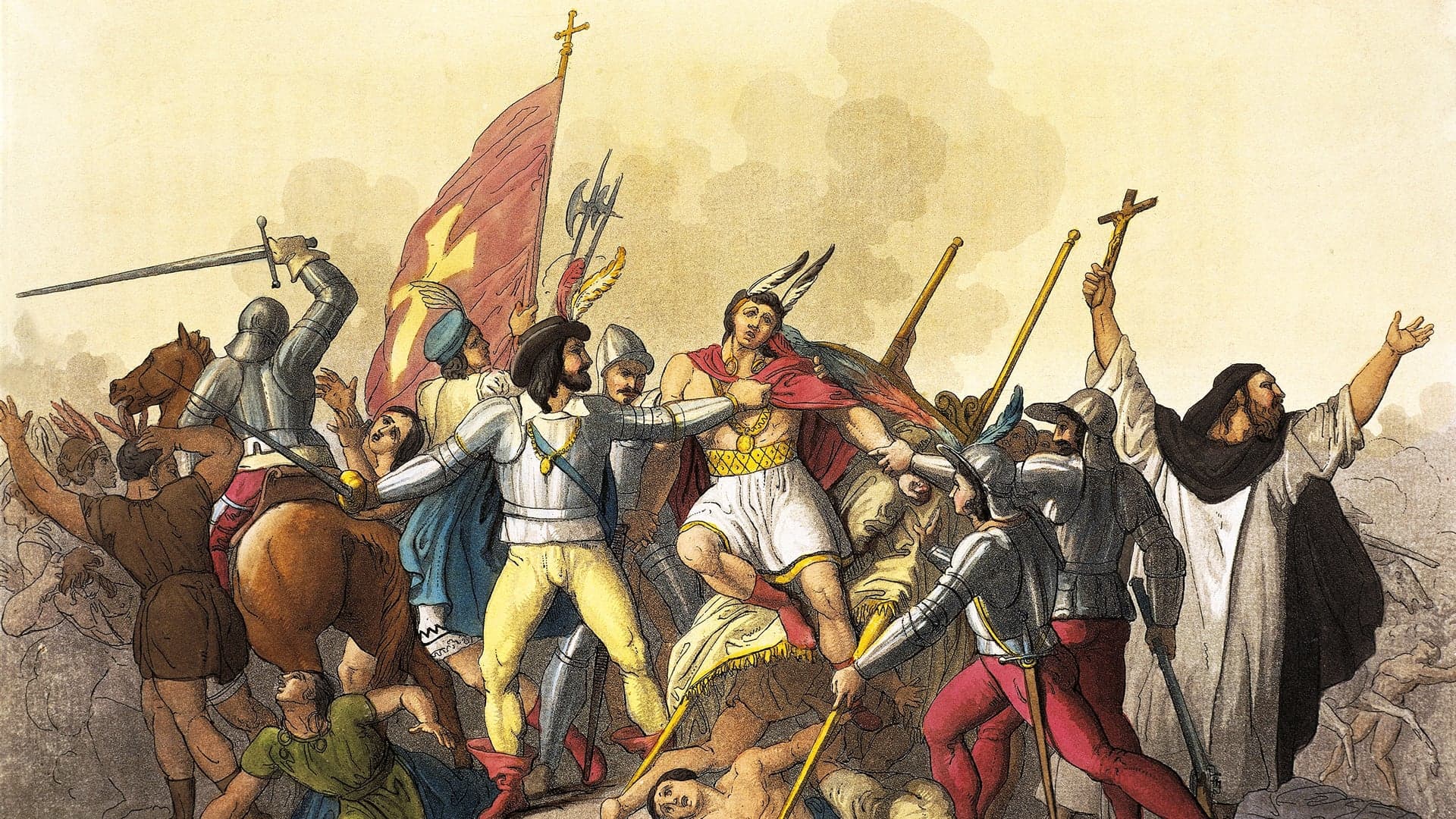
Francisco Pizarro traps Incan emperor Atahualpa
On November 16, 1532, Francisco Pizarro , the Spanish explorer and conquistador, springs a trap on the Incan emperor, Atahualpa. With fewer than 200 men against several thousand, Pizarro lures Atahualpa to a feast in the emperor’s honor and then opens fire on the unarmed Incans. Pizarro’s men massacre the Incans and capture Atahualpa, forcing him to convert to Christianity before eventually killing him.
By 1532, the Inca Empire was embroiled in a civil war that had decimated the population and divided the people’s loyalties. Atahualpa, the younger son of former Incan ruler Huayna Capac, had just deposed his half-brother Huascar and was in the midst of reuniting his kingdom when Pizarro arrived in 1531, with the endorsement of Spain’s King Charles V. On his way to the Incan capital, Pizarro learned of the war and began recruiting soldiers still loyal to Huascar.
Pizarro met Atahualpa just outside Cajamarca, a small Incan town tucked into a valley of the Andes. Sending his brother Hernan as an envoy, Pizarro invited Atahualpa back to Cajamarca for a feast in honor of Atahualpa’s ascendance to the throne. Though he had nearly 80,000 soldiers with him in the mountains, Atahualpa consented to attend the feast with only 5,000 unarmed men. He was met by Vicente de Valverde, a friar traveling with Pizarro. While Pizarro’s men lay in wait, Valverde urged Atahualpa to convert and accept Charles V as sovereign. Atahualpa angrily refused, prompting Valverde to give the signal for Pizarro to open fire. Trapped in tight quarters, the panicking Incan soldiers made easy prey for the Spanish. Pizarro’s men slaughtered the 5,000 Incans in just an hour. Pizarro himself suffered the only Spanish injury: a cut on his hand sustained as he saved Atahualpa from death.
Realizing Atahualpa was initially more valuable alive than dead, Pizarro kept the emperor in captivity while he made plans to take over his empire. In response, Atahualpa appealed to his captors’ greed, offering them a room full of gold and silver in exchange for his liberation. Pizarro consented, but after receiving the ransom, Pizarro brought Atahualpa up on charges of stirring up rebellion. By that time, Atahualpa had played his part in pacifying the Incans while Pizarro secured his power, and Pizarro considered him disposable. Atahualpa was to be burned at the stake—the Spanish believed this to be a fitting death for a heathen—but at the last moment, Valverde offered the emperor clemency if he would convert. Atahualpa submitted, only to be executed by strangulation. The day was August 29, 1533.
Fighting between the Spanish and the Incas would continue well after Atahualpa’s death as Spain consolidated its conquests. Pizarro’s bold victory at Cajamarca, however, effectively marked the end of the Inca Empire and the beginning of the European colonization of South America.
Also on This Day in History November | 16
This day in history video: what happened on november 16.

Oklahoma enters the Union
Joseph goebbels publishes his screed of hate, u.s. provides support to beleaguered cambodians.
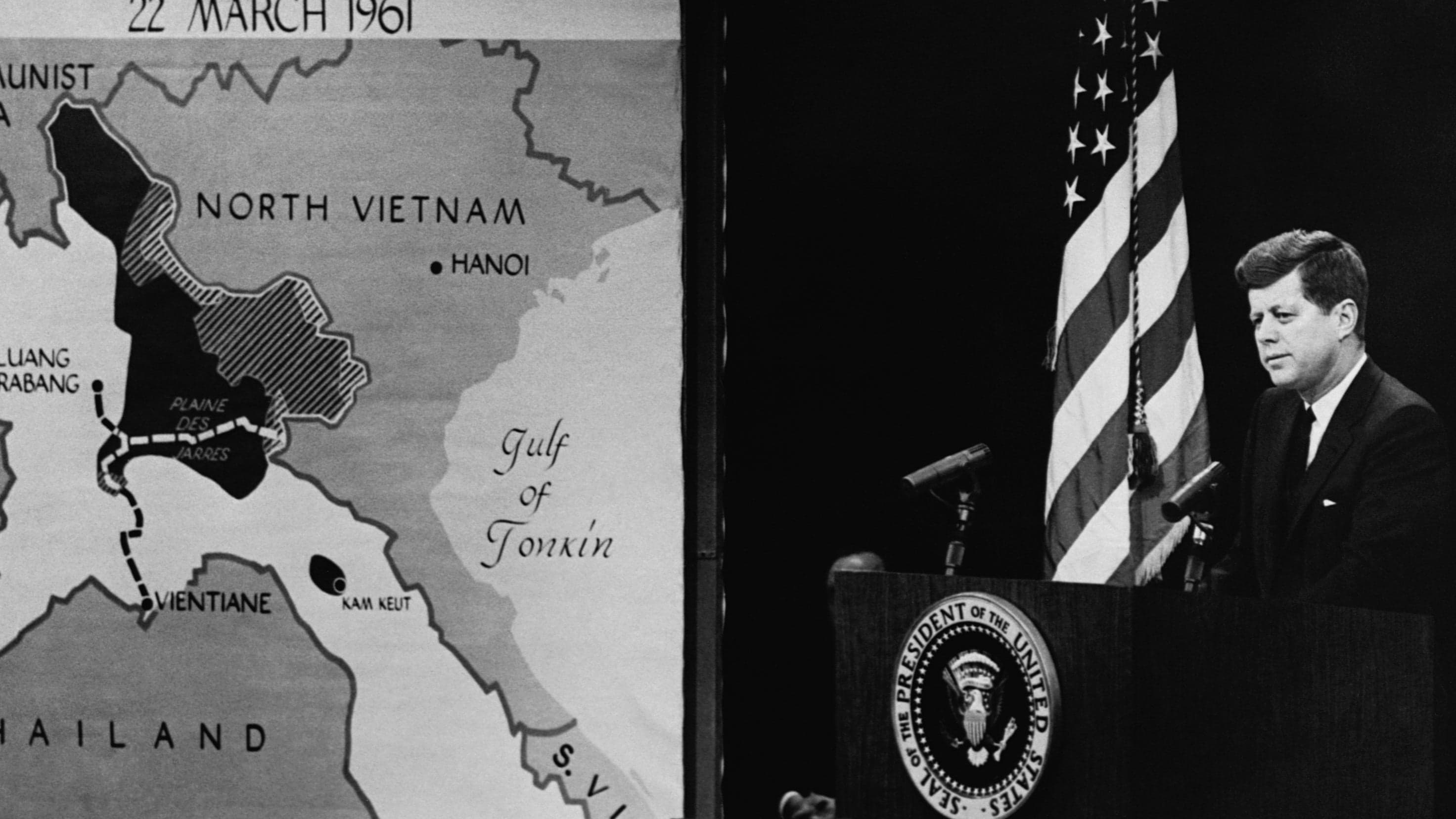
President Kennedy increases military aid to Saigon
“the sound of music” premieres on broadway.

Wake Up to This Day in History
Sign up now to learn about This Day in History straight from your inbox. Get all of today's events in just one email featuring a range of topics.
By submitting your information, you agree to receive emails from HISTORY and A+E Networks. You can opt out at any time. You must be 16 years or older and a resident of the United States.
More details : Privacy Notice | Terms of Use | Contact Us
Fyodor Dostoevsky is sentenced to death
First harry potter film opens, ed gein kills final victim bernice worden, british capture fort washington.
- +51 984 004 472
- Machu Picchu, Cusco, Perú
- Mon-Sat: 10 AM – 5 PM
Pizarro, the conqueror who defeated 40,000 Inca soldiers
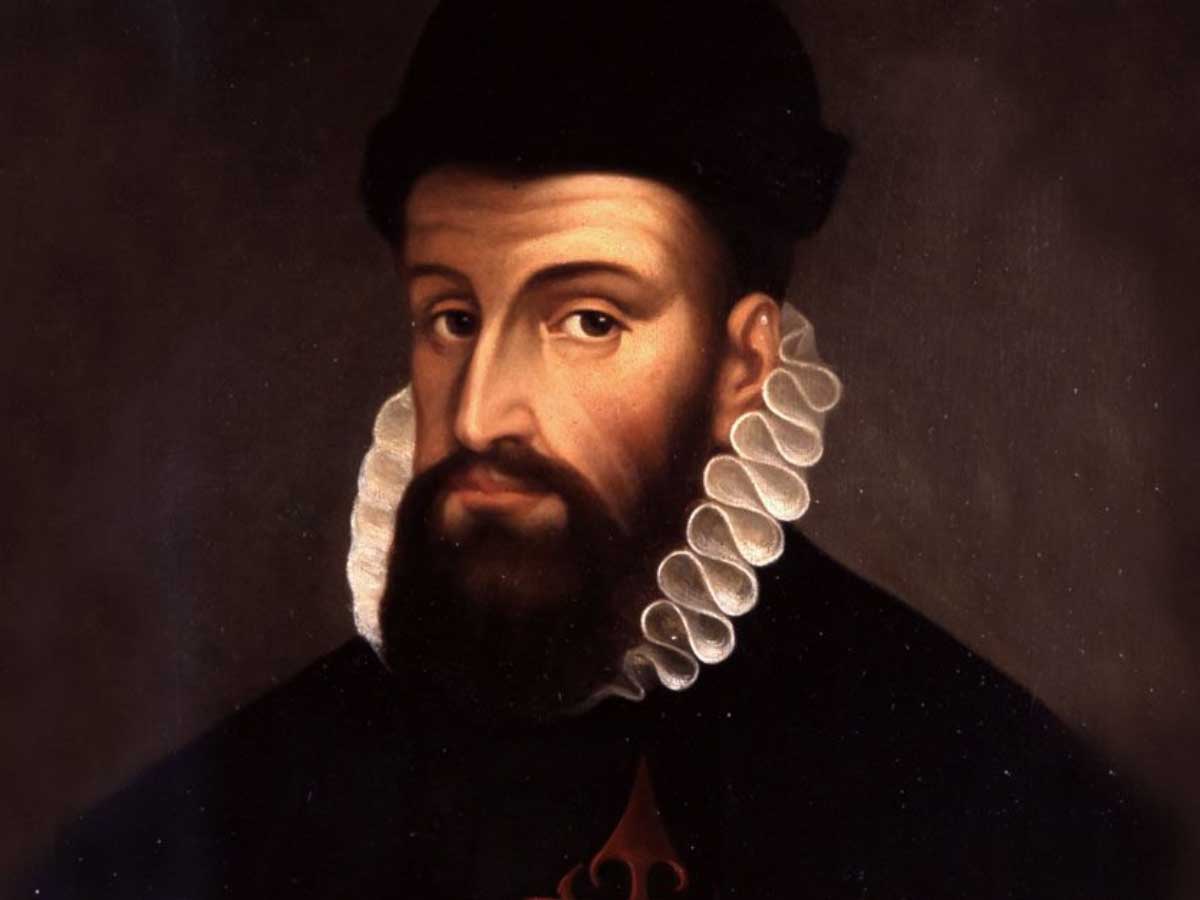
In the years when all the corners of the planet were not yet known, few dared to venture into the unknown and unexplored jungles of the so-called New World. However, among them was Francisco Pizarro, a Spaniard who, by sword and morion, led several exploration parties to Peru and came to defeat, along with 200 other Spaniards, an army of almost 40,000 Incas.
Pizarro was a bastard son, a pig farmer, and without culture. He was born in Trujillo (Cá ceres) Although to this day the exact date on which Francisco Pizarro was born is not yet known, the possibility that it was between 1476 and 1478 has been established. However, what is known for sure is that the place where her mother gave birth was the town of Trujillo, in the heart of Extremadura. In turn, there is consensus about his parents. Specifically, he was the bastard son of Don Gonzalo Pizarro (a war hero who fought under Gonzalo Fernández de Córdoba, the "Great Captain") and Francisca Gonzá lez.
Since he was little, Francisco never stood out for his interest in culture, something that undoubtedly helped his father decide to force him to take care of pigs. However, and according to legend, within a few years the animals in his care contracted a serious illness, and Francisco, for fear of being blamed for it, fled to Seville when he was only 15 years old. From there he began his military life, as he decided to embark on Italy to fight in the Tercios.
Pizarro would begin his journey through the lands of the New World at the age of 24. He traveled to America, like many, seduced by adventures and the possibility of making money. After his arrival, he participated as a soldier in several expeditions knowing in advance that, because he was a bastard son and lacked culture, it would be very difficult for him to ascend.
Those were difficult years in which the Spaniards tried, at the cost of many lives, to settle in the territory fighting against the natives of the place: the indigenous people. The Indians were exotic. They walked naked, slept in wooden shacks, and slept in hammocks. They were hairless, shorter than Spaniards, but well proportioned (…) As for the women, they were half-length uncovered up (…) The virgins showed their bodies entirely naked ” determines the writer and law graduate Roberto Barletta Villarán in her book « Brief history of Francisco Pizarro»
Everything changed radically for Pizarro during one of the expeditions led by the conqueror Alonso de Ojeda to take the Gulf of Urabá (located near Panama). The task, which at first did not seem difficult, was complicated when the local natives, armed with bows and arrows smeared with poison, besieged the Spanish settlement built in the territory: the fort of San Sebastián.
His first military command happened because he seemed immune to plagues. After rough combats in which the Spaniards lost many men, everything got complicated when Ojeda was shot in his leg and had to be evacuated on a ship. It was at that moment that Pizarro, an anonymous soldier up to now, received, almost by obligation, the first command from him at 32 years of age.
Before leaving, Ojeda ordered Pizarro to resist for 50 days in the fort with the few soldiers available to him. In turn, he determined that, if after that period he did not receive reinforcements, he had the power to flee together with his men in two brigs that he left at his disposal. The Spanish did not hesitate and he prepared to defend the place for that long time.
An epic and deadly defense
As was to be expected, the next two months were an ordeal, as the fighting with the Indians was compounded by food shortages. Such was the despair of the soldiers that they were forced to kill and eat their horses, something unimaginable at that time. To make matters worse, as the days passed, the possibility of receiving reinforcements was reduced.
Finally, once the 50 days were up and no one had come to his aid, Pizarro decided it was time to go. However, a new difficulty arose: the two moored ships could not transport the 70 surviving soldiers. Therefore, he was forced to make a difficult decision.
From that moment on, his tenacity earned him the reputation of a courageous and regal man. He soon became mayor of Panama, a territory that became the spearhead for the Spanish conquest of Peru.
In 1522 Pizarro decided that it was time to leave for unexplored lands. However, it seems that Panama ended up becoming too small for him because in 1522 Pizarro decided that it was time to leave for unexplored lands. For this reason, at the age of 32, he decided to associate with two other adventure seekers and set course for Peru, a place where all kinds of stories related to riches circulated that were waiting to be captured by the first conqueror who found them.
The promises of wealth thus captivated the bearded Spanish conqueror, who in 1524 organized a first expedition consisting of two rickety ships, 110 men, 4 horses, and even a war dog. However, despite the money invested, this first adventure was not very successful. Despite everything, Pizarro did not give up, and just two years later he planned a new trip in which, with similar resources, he set out again in search of Peru.

Statue of Francisco Pizarro in his native town, Trujillo (Cáceres)
Although this exodus began in a somewhat more prolific way than the previous one, as they managed to capture an Indian merchant barge loaded with all kinds of precious pearls, it did not end pleasantly. Specifically, the difficulties came after the Spanish column entered the jungle, where the soldiers, hungry, thirsty, and eaten by disease, also had to face some groups of indigenous people.
Such was the situation for the soldiers that, when they reached a safe island, many decided that enough calamities had already passed to move on. The majority stated that it was time to hoist the anchor and return to Spanish territory.
At that moment, Pizarro made a speech of great emotion trying to convince his men to hold out a little longer, since riches were at hand.
It seems that the decision was advantageous to them because, after exploring a large area of western South America, they managed to get hold of all kinds of wealth delivered by some local caudillos and returned to Panama as heroes in 1529. However, after this last trip, now it was time to plan the armed invasion of the territory, which would raise Pizarro as a great military strategist.
In search of Atahualpa
Today it is still unknown why the decision was made, but whether it was due to pride, to discover the true intentions of Atahualpa, or to seek luck in the north, Pizarro decided that he would leave with his soldiers to meet the Inca. Again, and making use of his oratory, he gave a speech to the soldiers in which, according to the chroniclers, he pointed out that, if the Incas were hostile, he trusted that his soldiers would be up to the task. of the circumstances. The die was cast. The Spanish contingent formed determined to advance towards the city of Cajamarca (located in the northern highlands of Peru), to meet the powerful Inca leader. They did not know if he would fight or not, but they were determined to face any eventuality and they trusted their cannons, their faithful arquebuses -whose noise distressed the Indians- and their horses -animals that the natives believed to be infernal and before whom they fled in terror.
During the long journey, however, all kinds of emissaries from Atahualpa came to meet Pizarro's small army, offering them a multitude of gifts and informing them that his chief intended to meet them in Cajamarca. However, this did not relax the Spanish officers, whose eyes went to the hilt of the sword with each step they took. Such was the suspicion that some officers of the column advised the Spanish not to eat or drink anything sent by the enemy king.

Arrival to Cajamarca
On November 15, 1532, the column finally saw the entrance to Cajamarca, a beautiful stone city at 2,700 meters above sea level. « The Spaniards were speechless by the great horror they felt when they saw the extension of the enemy camp. In it there would be about 50,000 people, more than half warriors ", explains, in this case, Barletta.
In an attempt to gain confidence and disconcert would-be assailants waiting in hiding in the city, Pizarro ordered his horsemen to gallop into Cajamarca. On the other hand, it was not necessary to use the terror that the Spanish mounts instilled in the Indians since that part of the city was deserted. Taking advantage of this small advantage, the Spanish military then decided to settle in the central square of the place, which could act as a fortress, having only two entrances between the buildings.
Cajamarca was a beautiful stone city of about 50,000 people. Curiously, an Inca emissary soon arrived to meet Pizarro to inform the Spaniards that his chief, Atahualpa, was quartered with his men in a nearby compound. There was nothing more to talk about: Pizarro entrusted his brother to go to the place and meet with the South American leader.
After selecting a very small escort, Hernando appeared before Atahualpa. This, according to Lavallé was a strong, attractive man in his thirties. Haughty, the Inca leader did not address the Spanish representative directly at any time but made his words pass first through a nobleman. For their part, the Spaniards did not dismount from the saddle throughout the interview for fear of being attacked.
After drinking a local liquor - not without suspicion on the part of the Spaniards, who continued to maintain the idea that the presents they were given could be poisoned - Hernando asked the Inca leader, as planned, to come to dinner at the makeshift Spanish barracks. After a few seconds, Atahualpa decided not to disappoint the visitors and, although he explained that it was already late that day, he would come the next day to eat. The plan was in motion. Quickly, the horsemen returned to tell the news to their leader to begin preparations for the capture.
However, Atahualpa had his strategy. His plan was simple: he would go before the Spaniards apparently without ill intention, but very determined to take them by surprise, to kill them along with their mounts, and to reduce to slavery those who were saved. For this ambush, he ordered his soldiers to cover their garments made of palm leaves with wide woolen dresses, “ Lavalle points out from his side.
An incredible victory
The next day the Spaniards prepared their ambush. Specifically, Pizarro established that the abduction of Atahualpa would take place in the center of the plaza. In turn, he ordered all of his horsemen to remain motionless until he gave the order to attack. They all entrusted themselves to God because they knew that their only way to survive in that city was to capture the Incas, otherwise, they would be crushed by the immense enemy army.
Atahualpa arrived at the camp almost at dusk, after multiple insistence. Along with him, he brought an immense entourage and a huge amount of wealth that further enlivened Spanish illusions. On the other hand, thousands and thousands of fighters eager to destroy the conquering Spanish also stood out in his ranks.
Still in apparent peace, the priest of the company was the first to address Atahualpa, with his proper translator. As planned, the religious approached the Inca king to ask him to convert to Christianity and accept the word of God. In fact, and as a symbol of his words, he gave a Bible to the powerful leader, who was sitting on a throne carried by several porters.
Atahualpa, who had never seen a book before, was offered a Bible and threw it on the ground. Atahualpa, who had never seen a book, could not even open it. Shortly after trying to find out how that strange contraption worked, he threw it to the ground with hatred and later accused the Spaniards of having robbed and plundered their cities. This was too much for the clergyman, who cried out, according to Lavallé for revenge.
Christian patience ran out. Pizarro, armed with his sword, then pounced on Atahualpa with a small entourage to then give the signal to attack. At that moment, the almost fifty Spanish horsemen threw themselves on the enemy soldiers and the crowd that, trying to flee, caused an incredible human avalanche in which hundreds and hundreds of Incas perished.
On his side, while the cannons and arquebuses gave a good account of the enemy troops, Pizarro pounced on the throne of Atahualpa accompanied by a score of soldiers. Almost in a trance, the small troop pierced through and tore apart the Inca's guard with their swords, who were finally captured.
Half an hour later the square was in chaos. Most of the enemy troops had fled the city in fear. On the other hand, almost three thousand bodies, an immense part of Atahualpa's soldiers, dotted the ground. It had been a massacre, and it had been perpetrated by only two hundred Spaniards who had put an army of some 40,000 men to flight.
The failed rescue of Atahualpa
The plan had come to a flawless end. After the capture, Pizarro imprisoned Atahualpa in a room, who, in an attempt to be released, promised the Spanish to fill that same room with gold and two similar ones with silver if they set him free. Pizarro accepted without delay and, thus, tons and tons of wealth began to arrive in the city for the conquerors.
After several months, the Spanish managed to get a loot of close to 1,200,000 pesos, an enormous amount that had never before been obtained in any of Pizarro's trips. The soldiers did not fit in with joy during the distribution, because at last, they had obtained what they had been looking for for years.
Instead, Pizarro retracted his promise and decided to end Atahualpa's life after receiving false and interesting opinions from those close to him. Finally, on July 26, 1533, the Spanish officials met and decided to execute the king for, among other things, his betrayal of the Christians.
That same afternoon, the Spanish troops gathered in the town square to end the life of the president. "The Inca was tied to a tree trunk and bundles of firewood were placed at his feet, as the decision had been made to burn him alive as an idolater," the writer highlights.
Atahualpa before his death received baptism Instead, events took a turn after the Spanish cleric urged Atahualpa to receive the holy sacraments before dying so as not to perish in sin. “ Atahualpa would have asked where the Christians went after his death. Faced with the answer that they were buried in a church, the Inca would then have declared his will to be a Christian. Add in the text Lavallé. Because of this, he was finally baptized and, instead of being burned alive, he drowned.

Pizarro's death

After the feat was carried out with his 200 men, luck stopped smiling at Pizarro, who ended up at odds with another of the Spanish conquerors, Diego de Almagro. The confrontation reached such a level that both fought in a decisive battle in which the Pizarro troops won.
After the death of Almagro - who was executed after being tried by the Pizarro brothers - a dozen of his supporters attacked Francisco by surprise at his home in Lima on June 26, 1541. Finally, and even though he defended himself to the end, the old Spanish conqueror fell dead from a stab in the very city he had founded only six years earlier.
The Most Traditional Destinations in Peru
- 4 Day Inca Trail - Cusco
- Salkantay Trek - Cusco
- Machu Picchu - Cusco
- Inca Quarry Trail - Cusco
- 2 Day Inca Trail - Cusco
- Tambopata - Madre de Dios
- Titicaca Lake - Puno
- Cordillera Blanca - Huaraz
- Colca Canyon - Arequipa
- Manu Explore - Cusco
- Kuelap Hike - Amazonas
- Amazon Rainforest - Iquitos
The Best Adventure Holidays in Peru
Once the pandemic is over, we recommend visiting Peru, as it offers the best Adventure Tours for your holidays.
- Inti Raymi Peru
- Inca Trail and Amazon Rainforest (11 Days/10 Nights)
- Amazon to Salkantay Trek (11 Days/ 10 Nights)
- Inca Trail Expedition (11 Days/10 Nights)
- Inca Path Peru (9 Days/ 8 Nights)
- Machu Picchu and Amazon Tours (11 Days/10 Nights)
- Chachapoyas Tour (10 Days/ 9 Nights)
- 2 Day Inca Trail with Camping
- Short Inca Trail
- 2 Day Machu Picchu Tour from Lima
- 3 Day Inca Trail Challenge
- 3 Day Rainbow Mountain to Inca Trail
- 3 Day Sacred Valley to Inca Trail
- 4 Day Inca Trail
The property, complete with a 30-seat screening room, a 100-seat amphitheater and a swimming pond with sandy beach and outdoor shower, was asking about $40 million. Lorem ipsum dolor sit amet, consectetur adipis Vi ales elit vitae lo bortis faucibus. Lorem ipsum dolor sit amet, conse dolor sit amet, consectetu ctetur adipis Viales. Lorem ipsum dolor sit amet, cons sit amet, consectetur adi ectetur adipis Vi.

It is a long established fact that a reader will be distracted by the readable content of a page when looking at its layout. The point of using Lorem Ipsum is that it has a more-or-less normal distribution of letters, as opposed to using 'Content here, content here', making it look like readable English. Many desktop publishing packages and web page editors now use Lorem Ipsum as their default model text, and a search for 'lorem ipsum' will uncover many web sites still in their infancy.
“To take a trivial example, which ever undertakes laborious physical work exercise, except obtain some advantage blinded”

as opposed to using 'Content here, content here', making it look like readable English. Many desktop publishing packages and web page editors now use Lorem Ipsum as their default model text, and a search for 'lorem ipsum' will uncover many web sites still in their infancy.
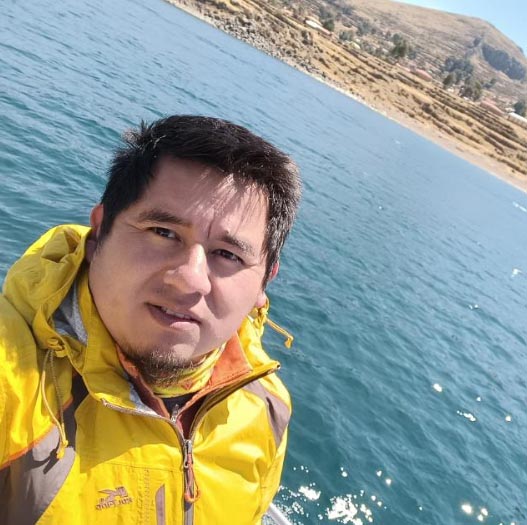
Edwin Caviedes Profesional guide
Lorem ipsum dolor sit amet, consectetur adipiscing elit. Vivamus sceler neque in euismod. Nam vitae urnasodales neque in faucibus.
Previous Post
The bedding was hardly able

Relson Dulux
Hello, We’re content writer who is fascinated by content fashion, celebrity and lifestyle. We helps clients bring the right content to the right people.
All Categories
- Manage Listings
- Address and Map
- Reservation Requests
- Your Reservation
- Search Results
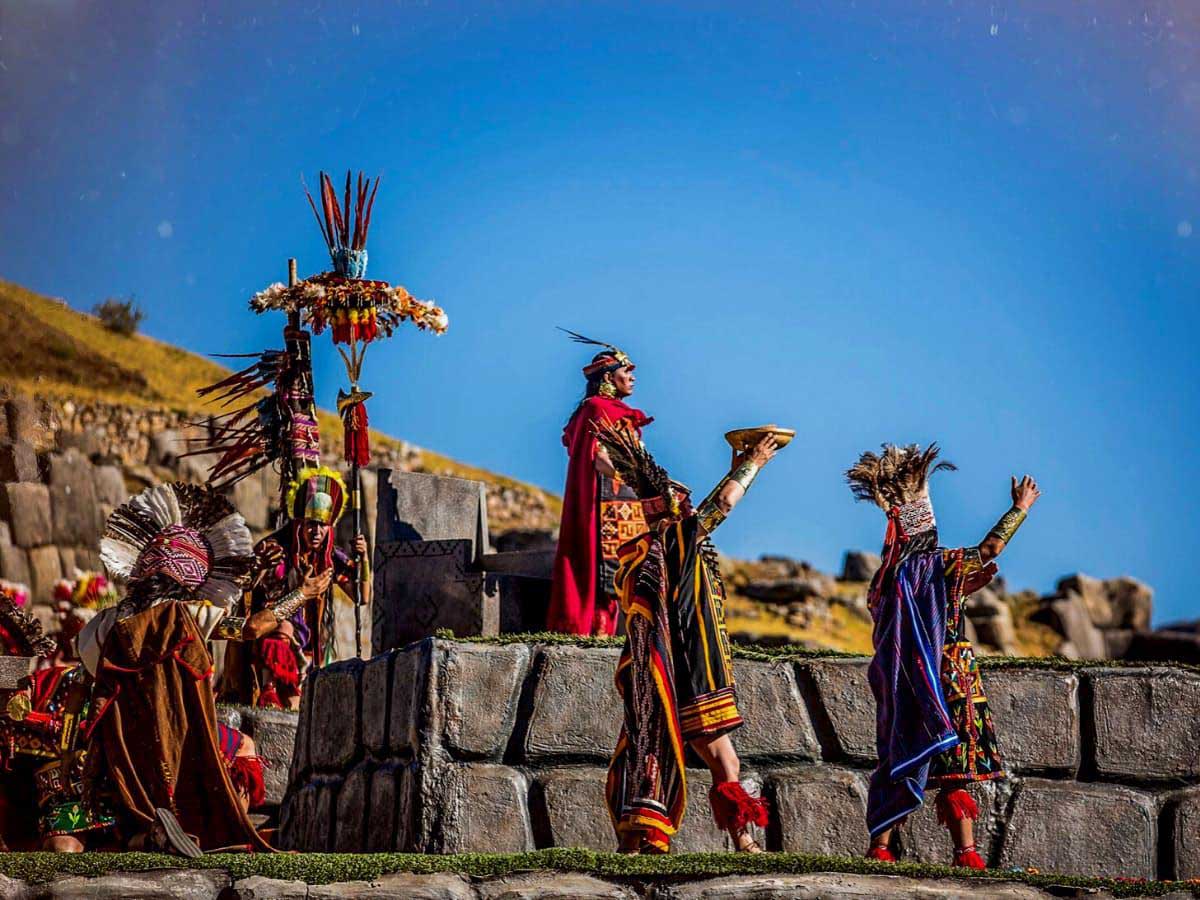
Condor Bird in Peru: The largest bird in the world
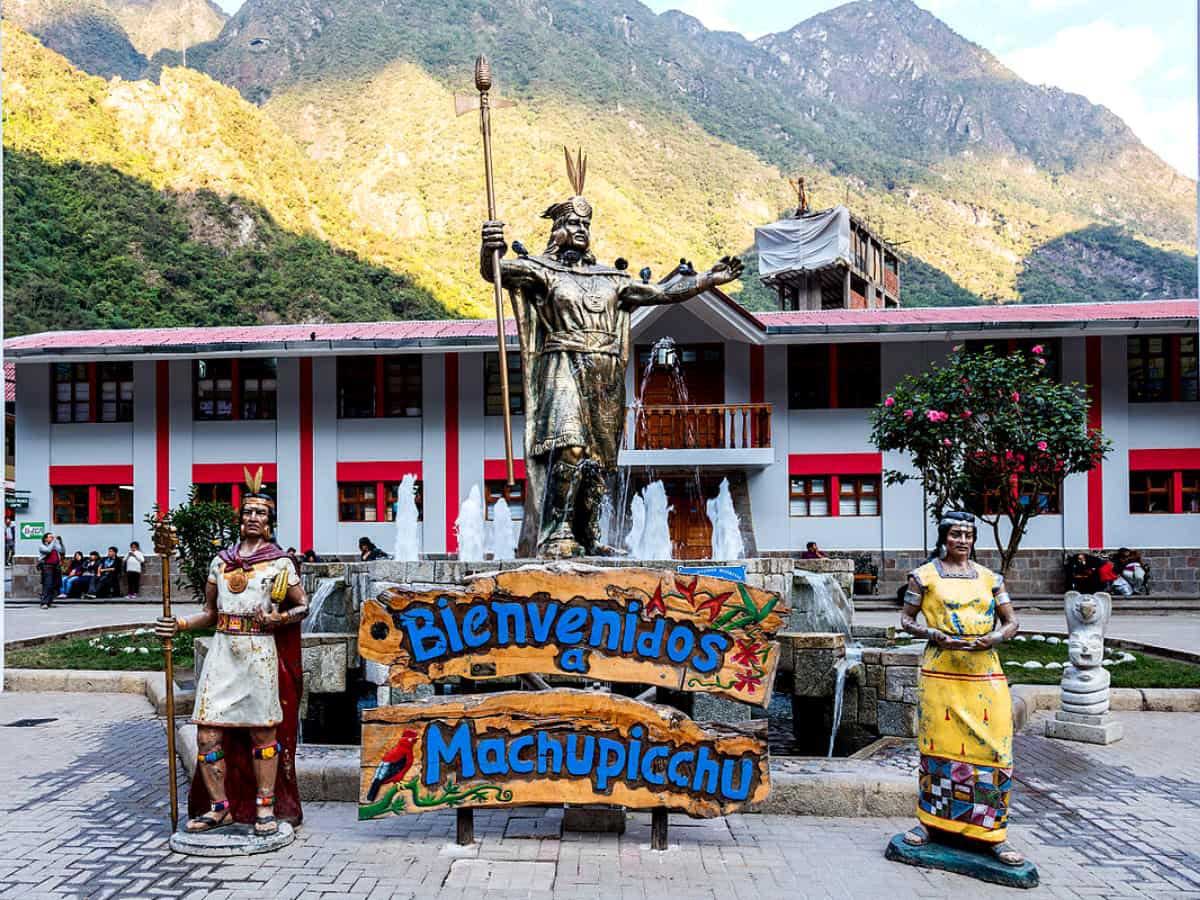
Aguas Calientes: Everything you need to know before to visiting Machu Picchu village
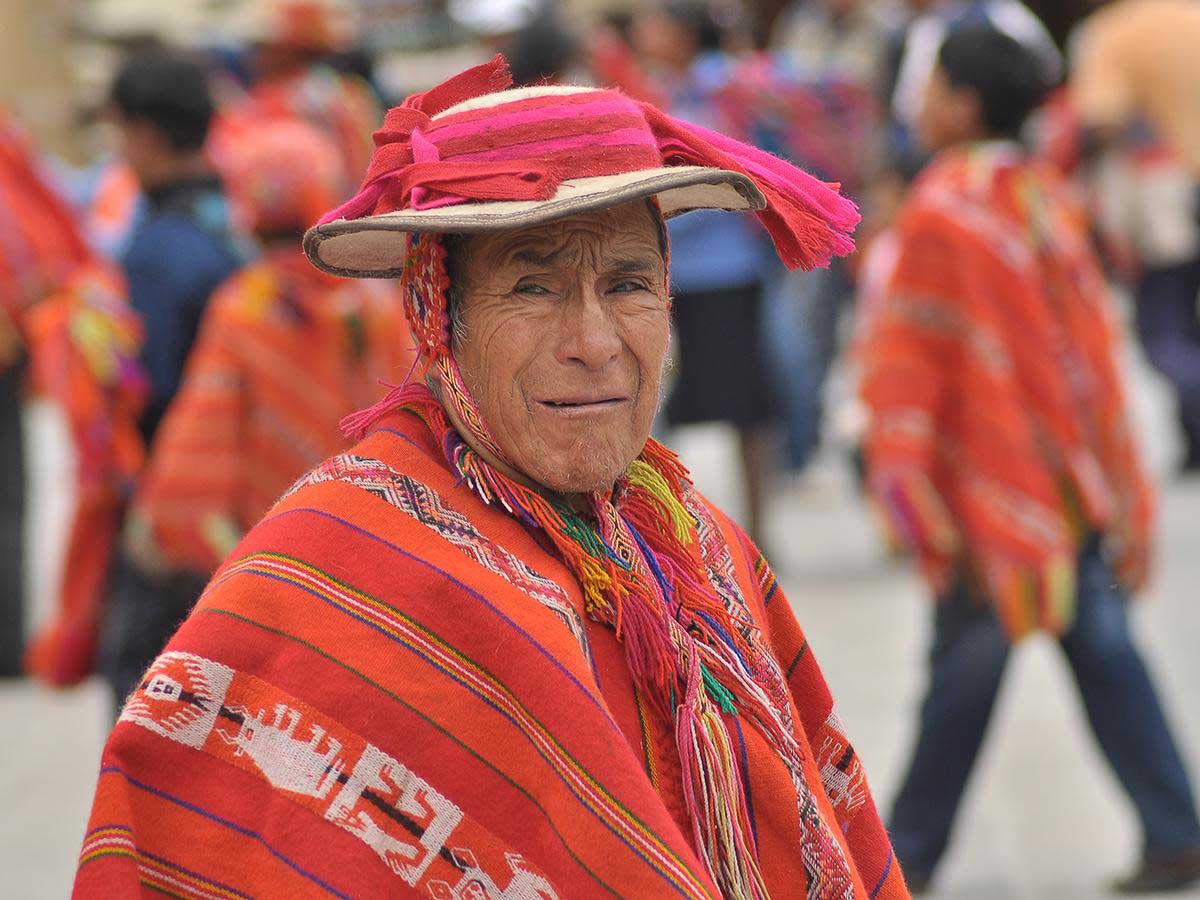
Traditional Peruvian Clothing
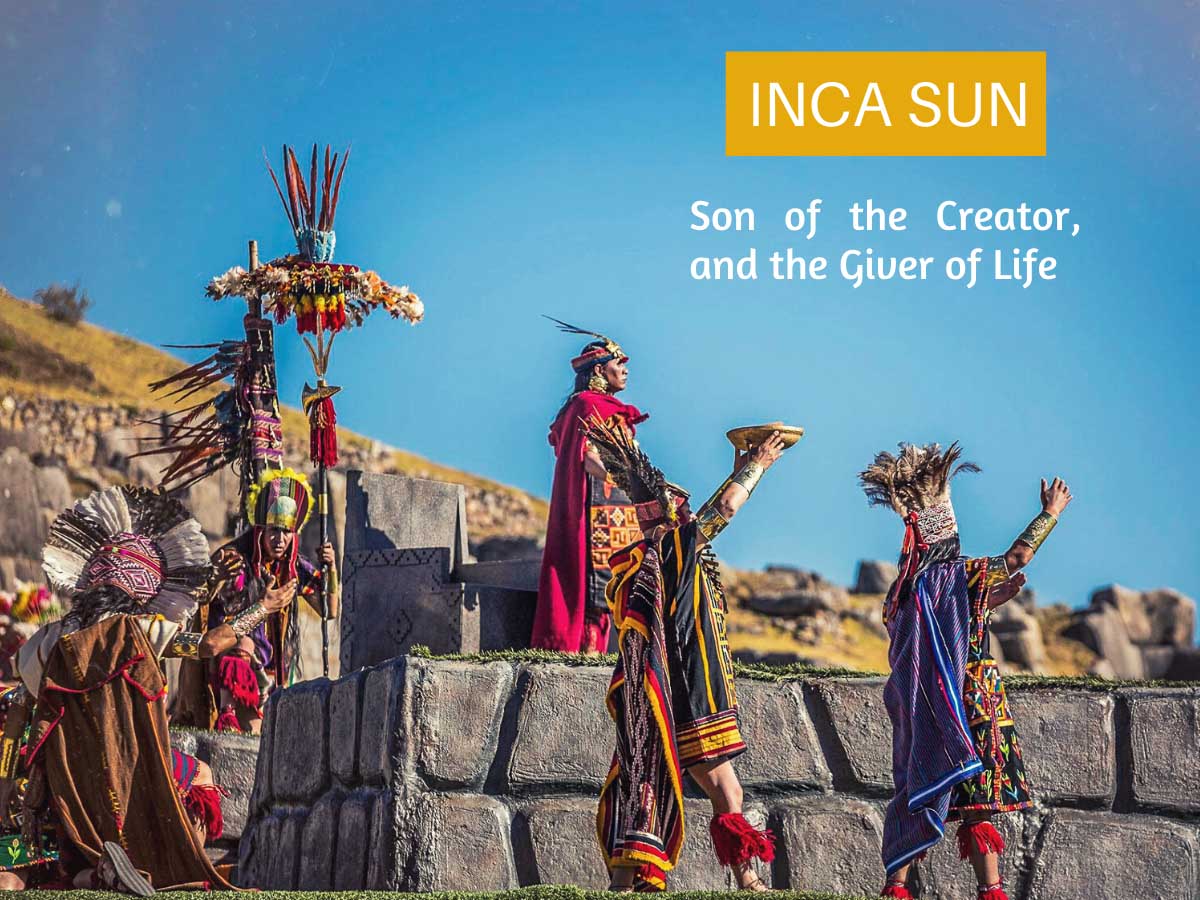
Inca Sun God
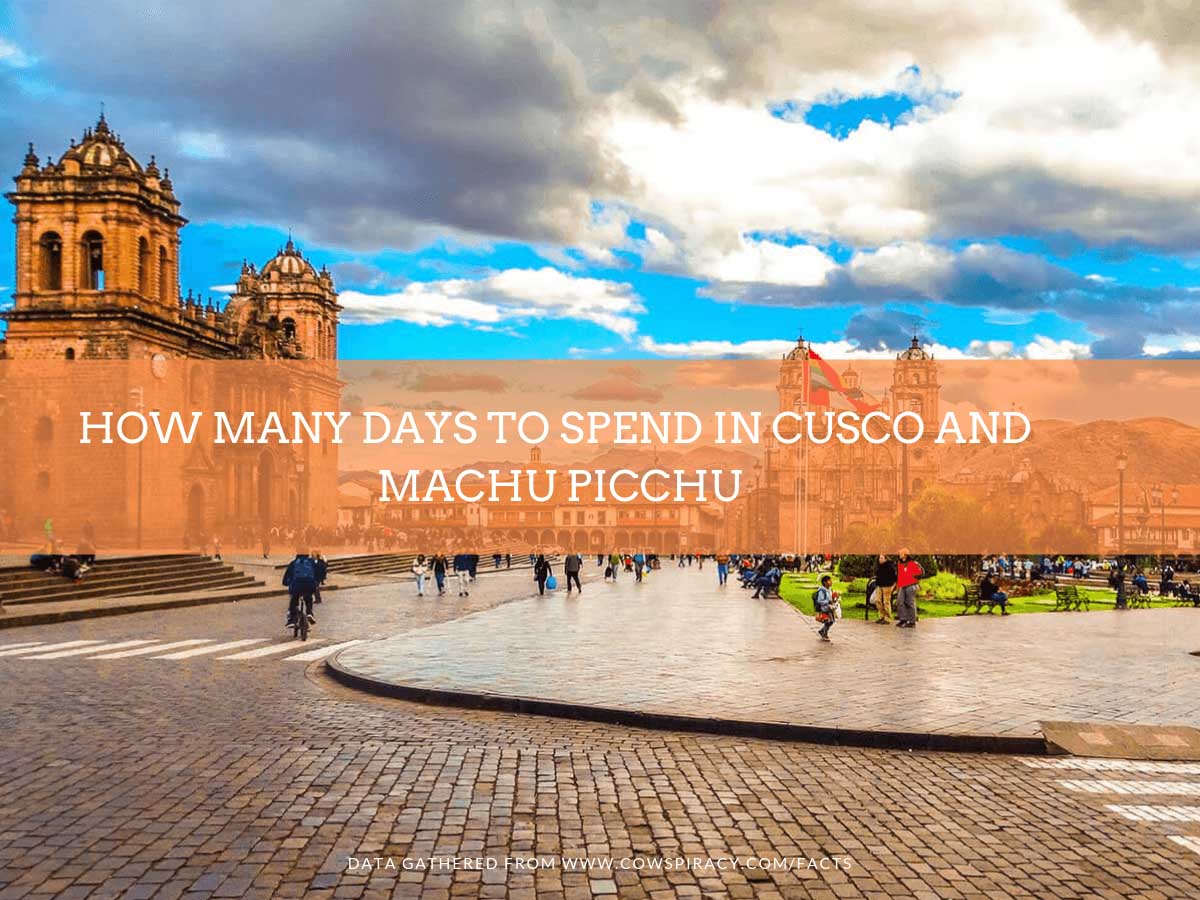
How Many Days to Spend in Cusco and Machu Picchu
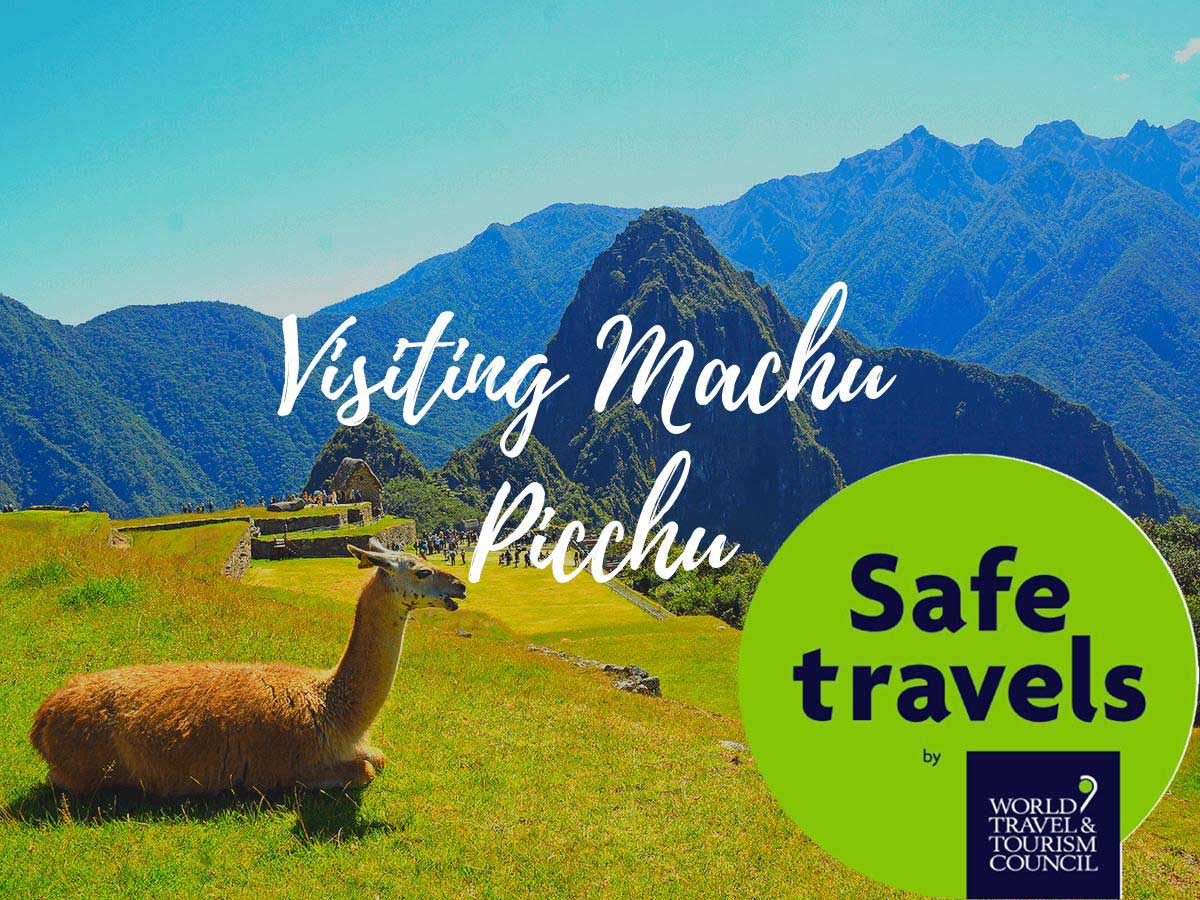
Machu Picchu to Close: Ultimate Upgrade 2024
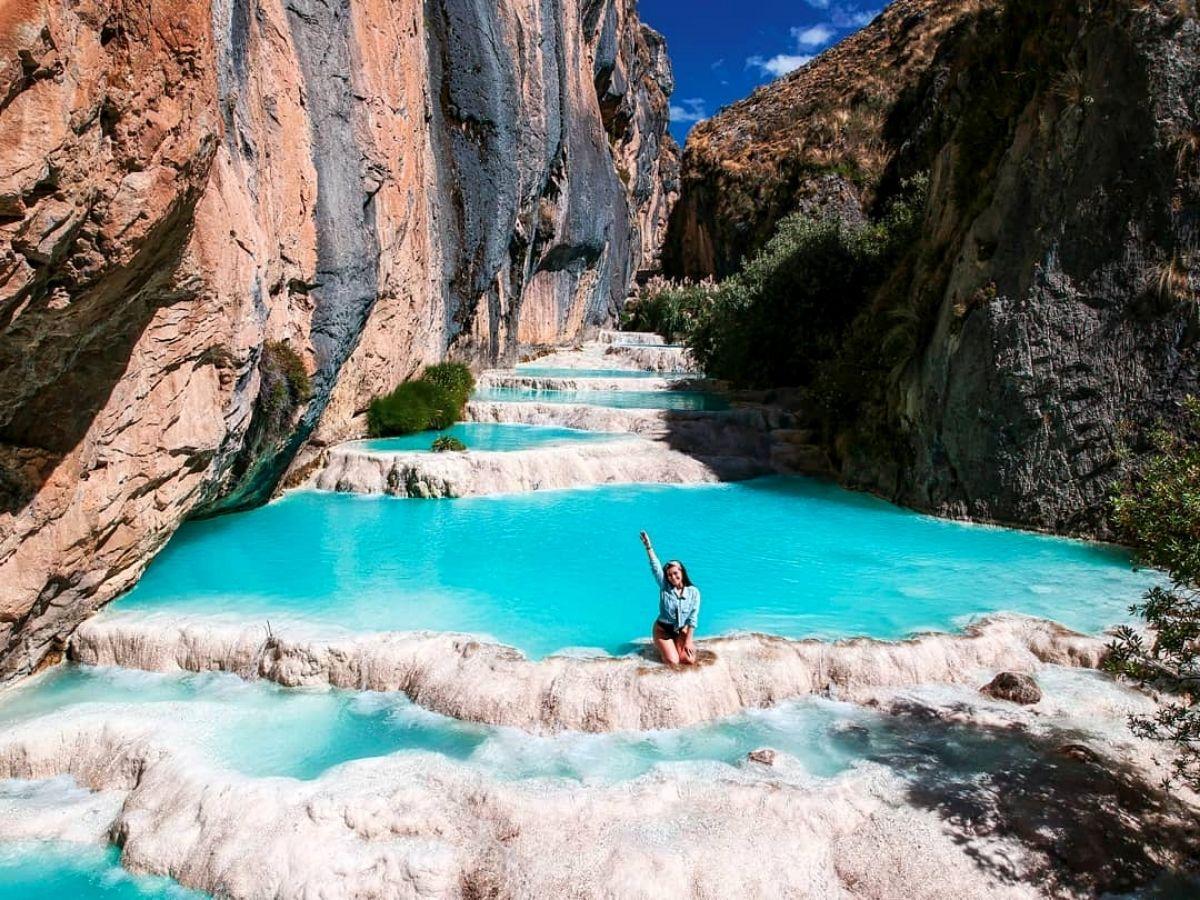
Millpu: Get to know these beautiful natural pools
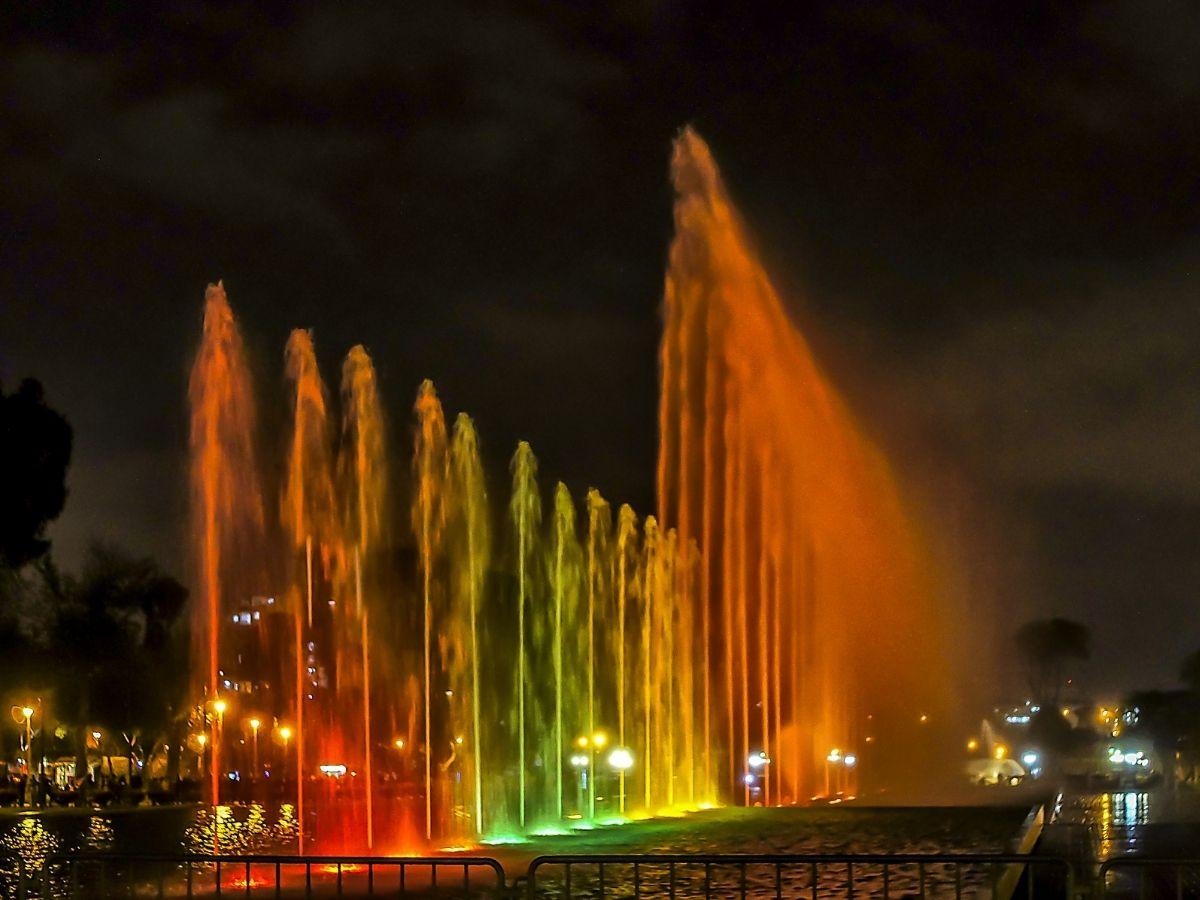
Magic Water Circuit of the Reserve Park
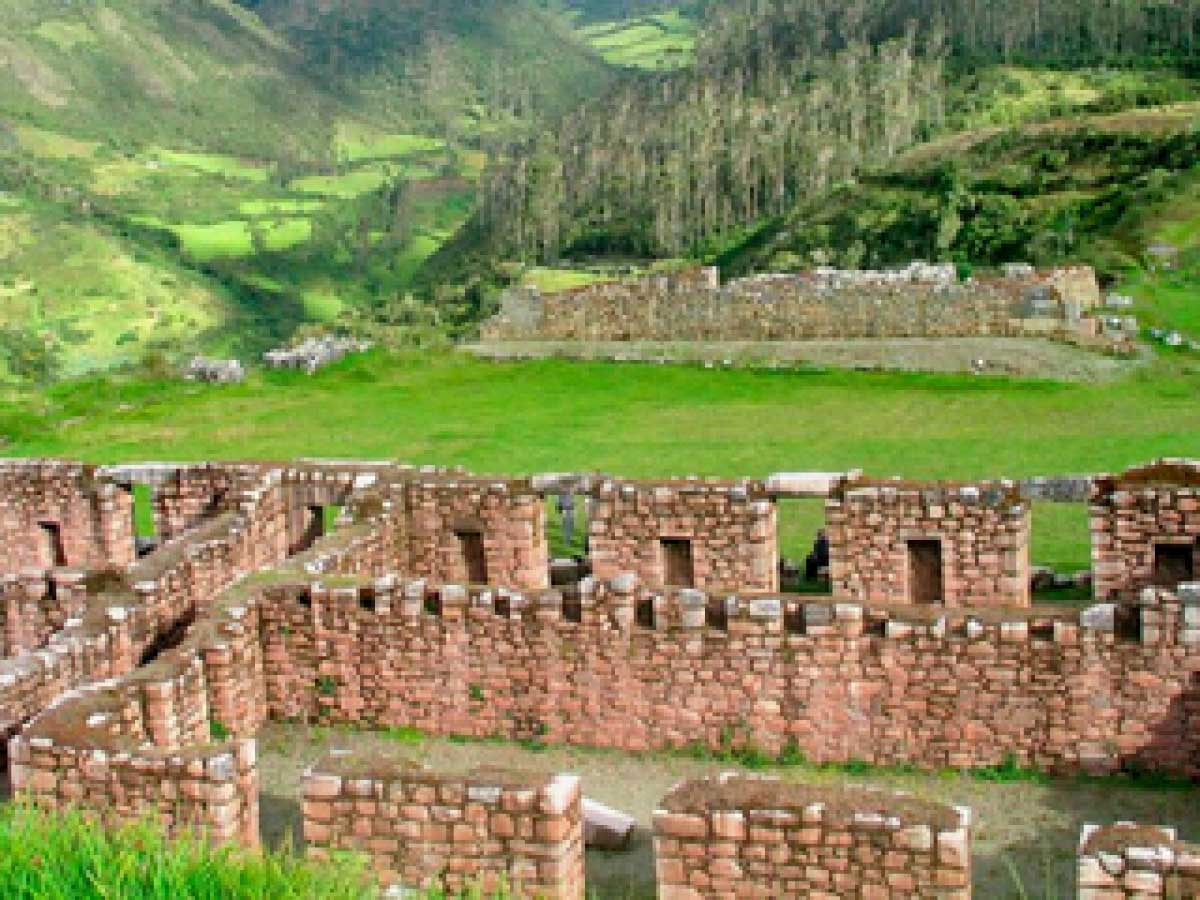
Vilcabamba: know the lost city of the Incas in Cusco
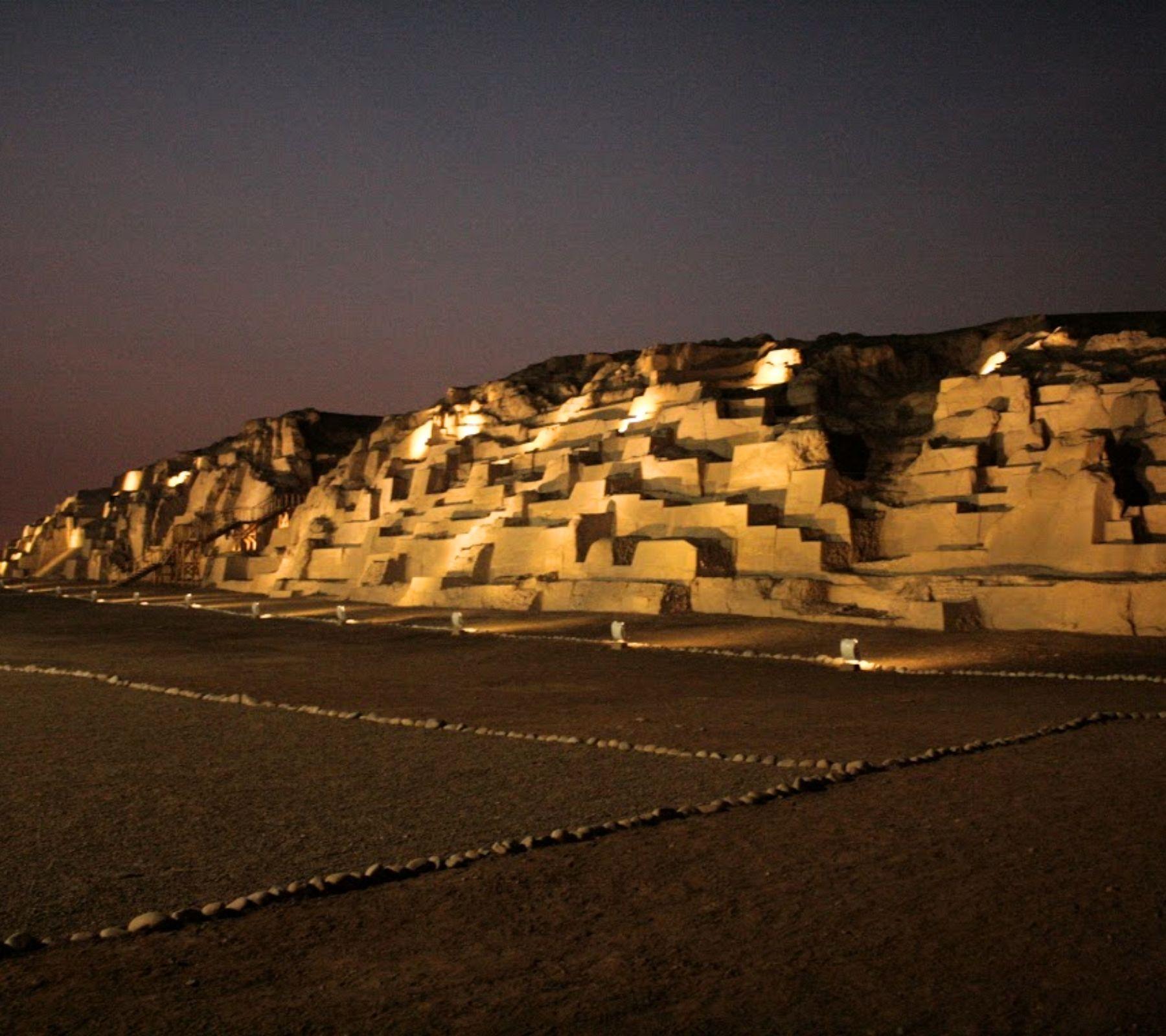
Mateo Salado Archaeological Complex
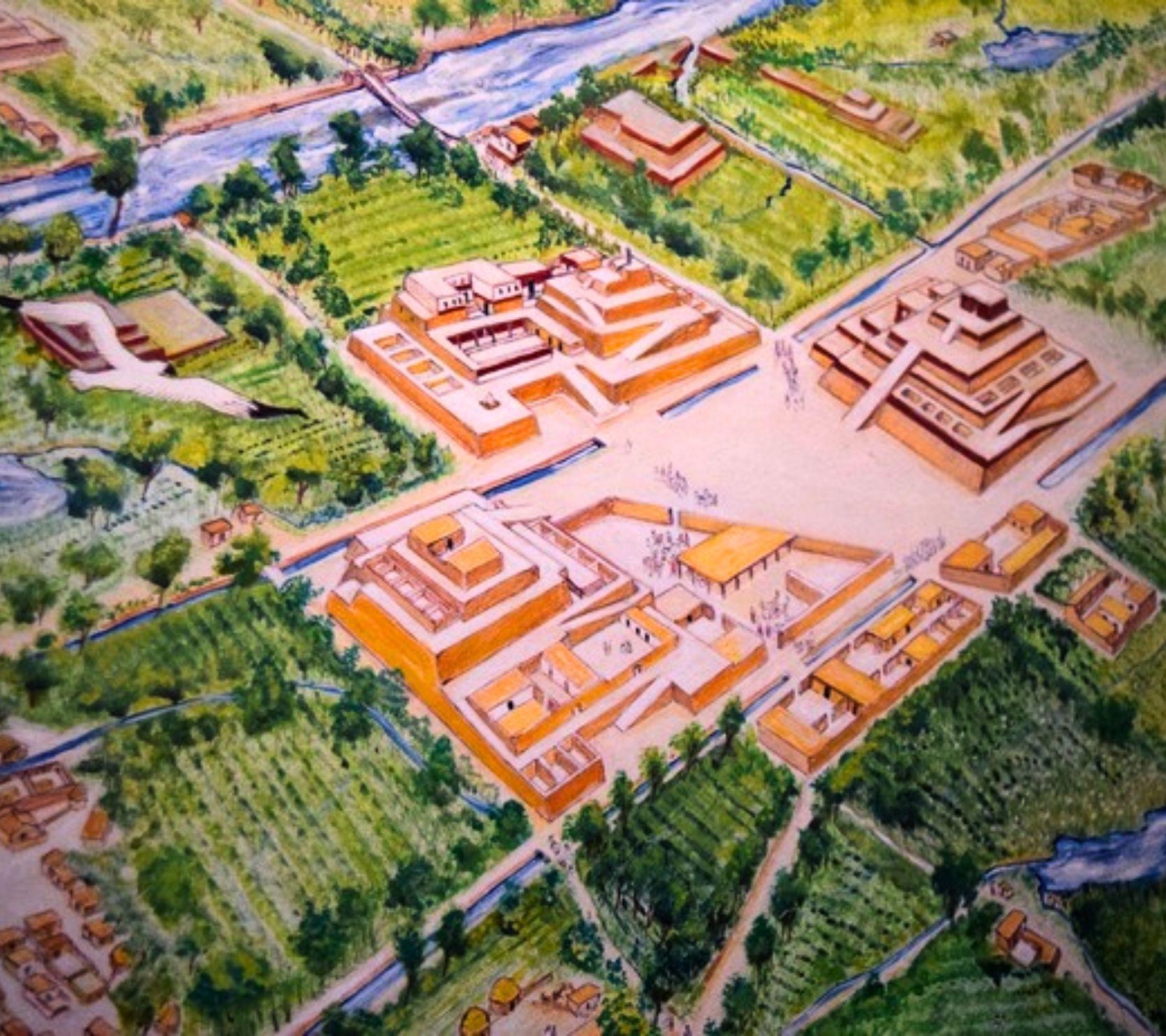
The Rimac valley: the name, origin and route
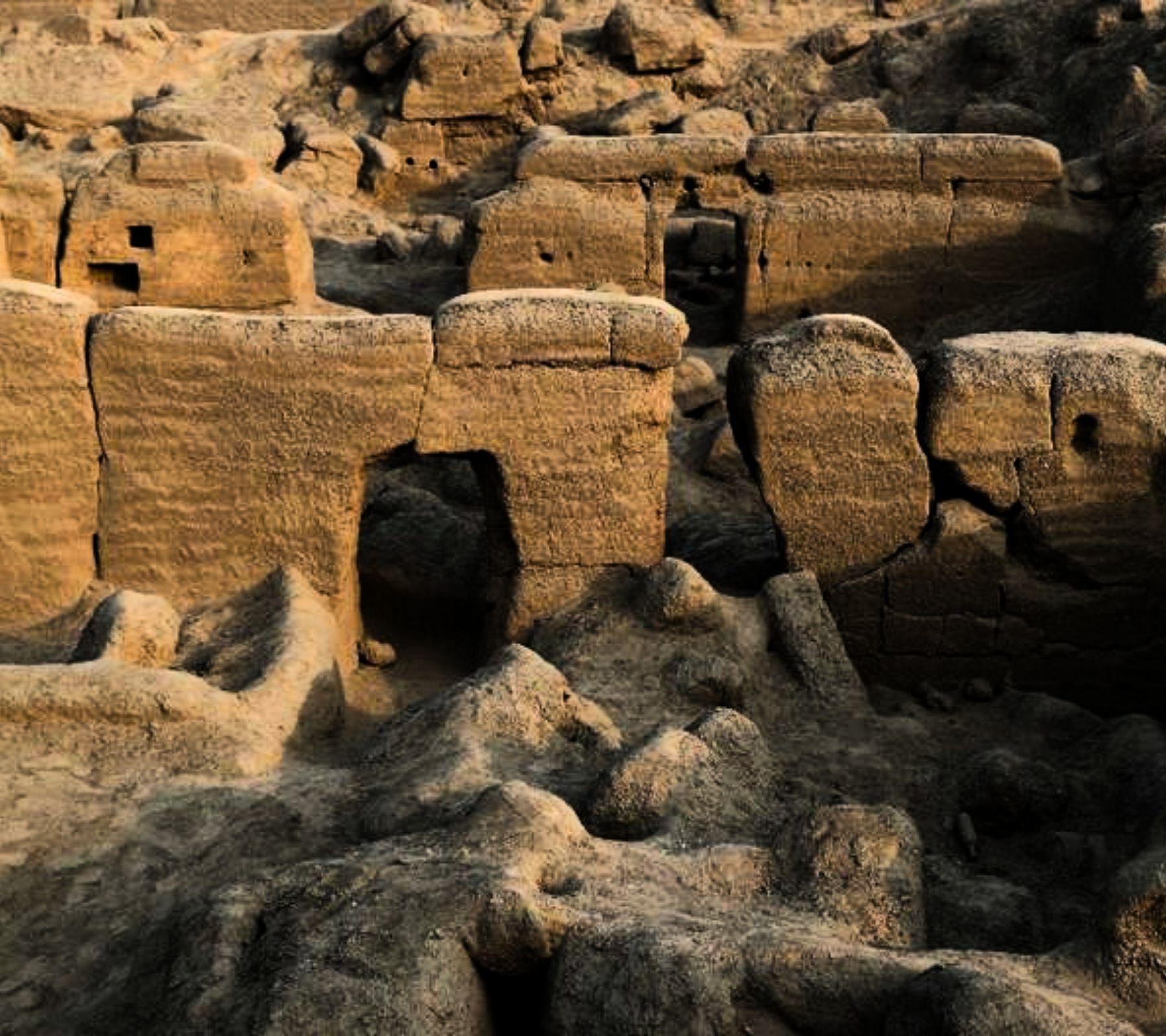
Tourism in Cajamarquilla Archaeological Site
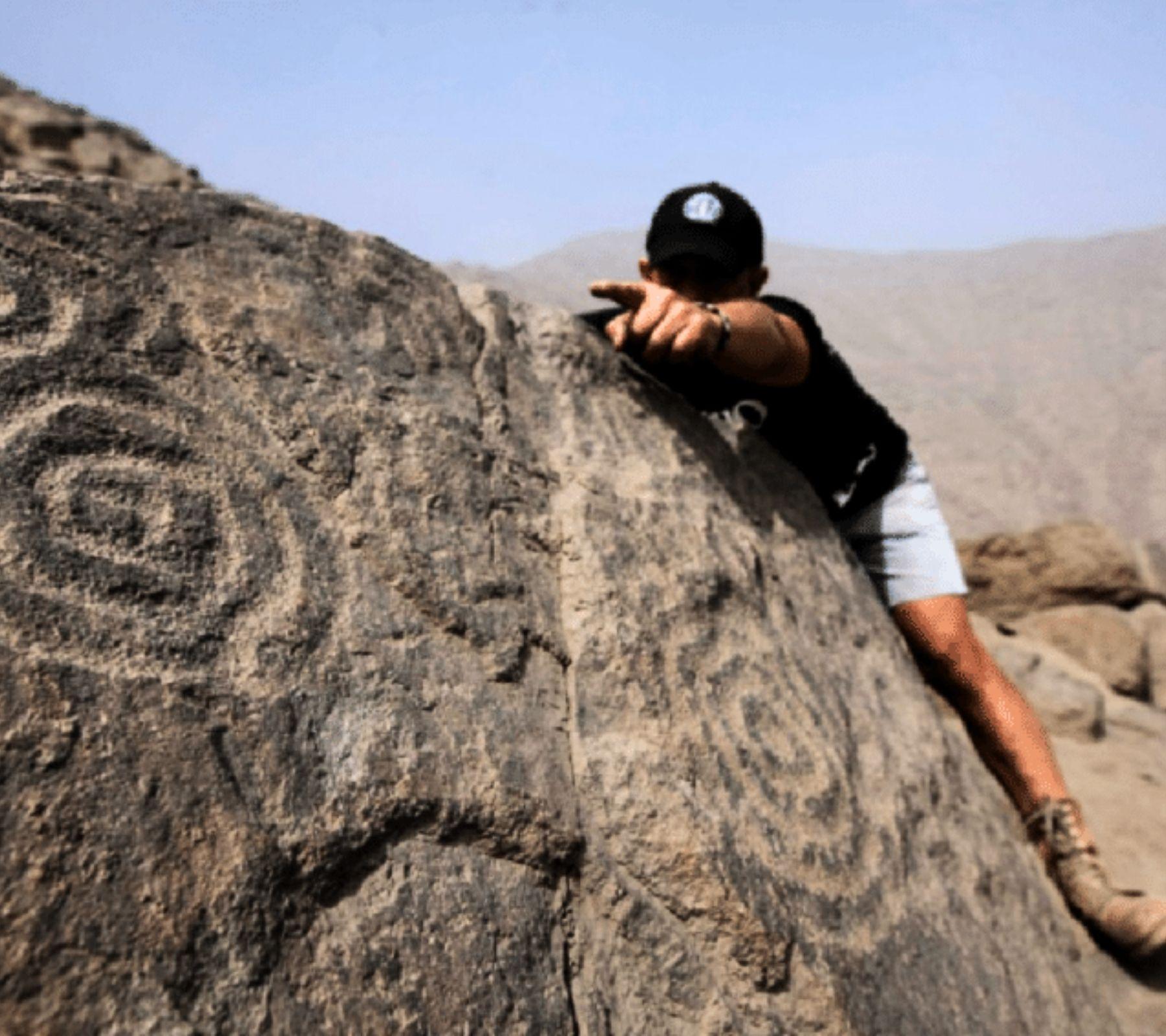
Monuments of the Chillon Valley: Cerro Culebra
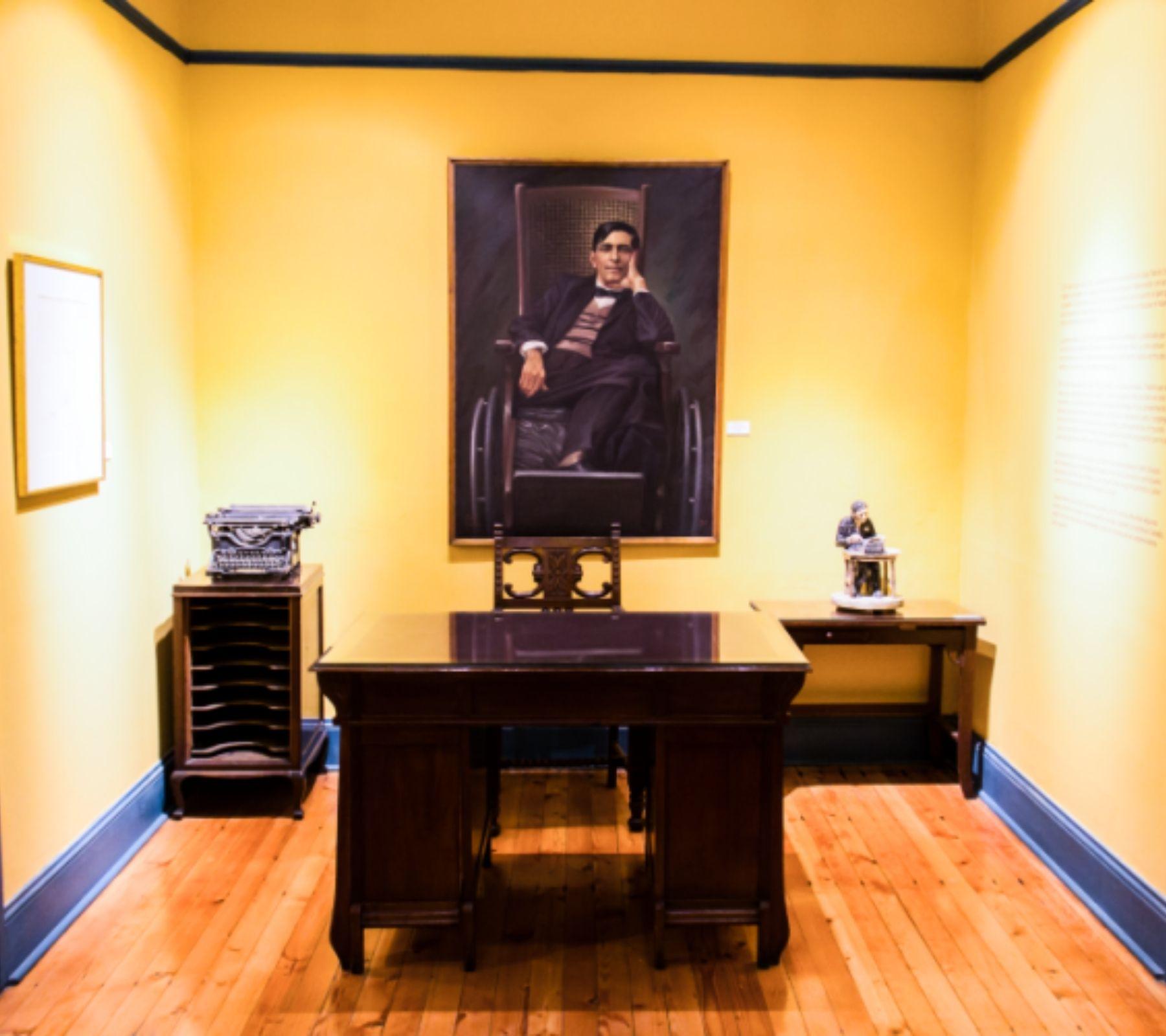
Jose Carlos Mariategui Museum
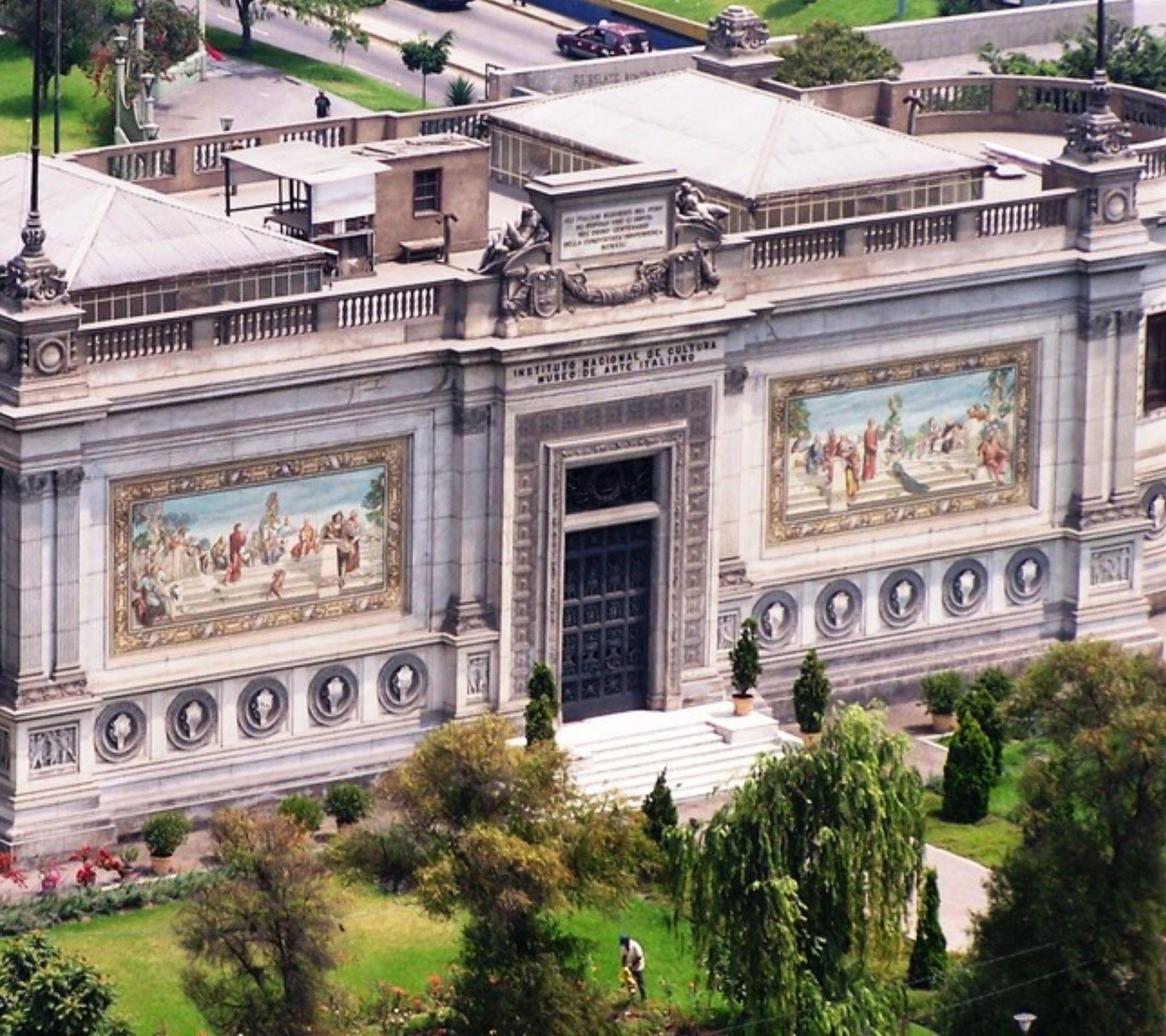
Museum of Italian Art
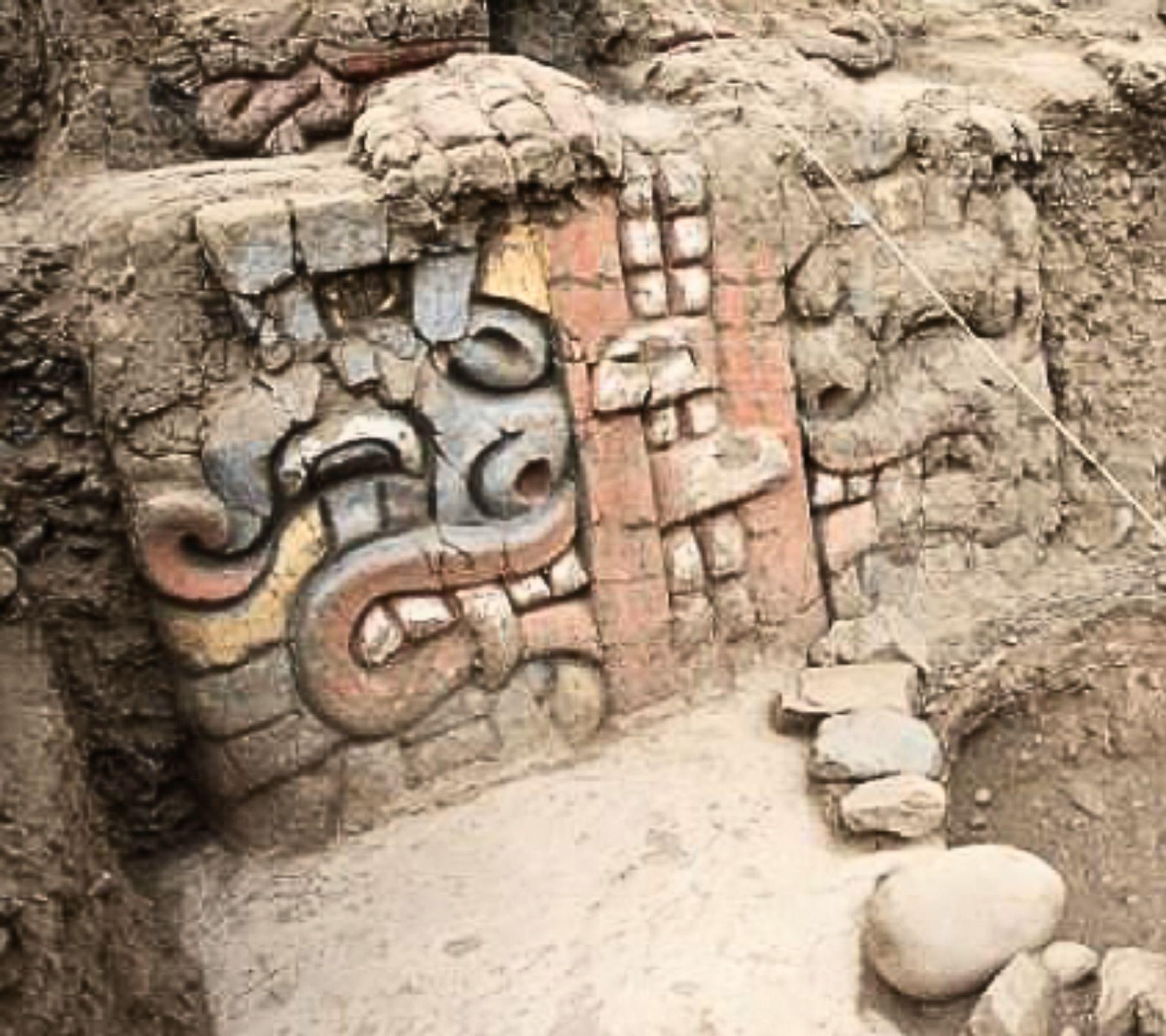
Tourism in Huaca Garagay
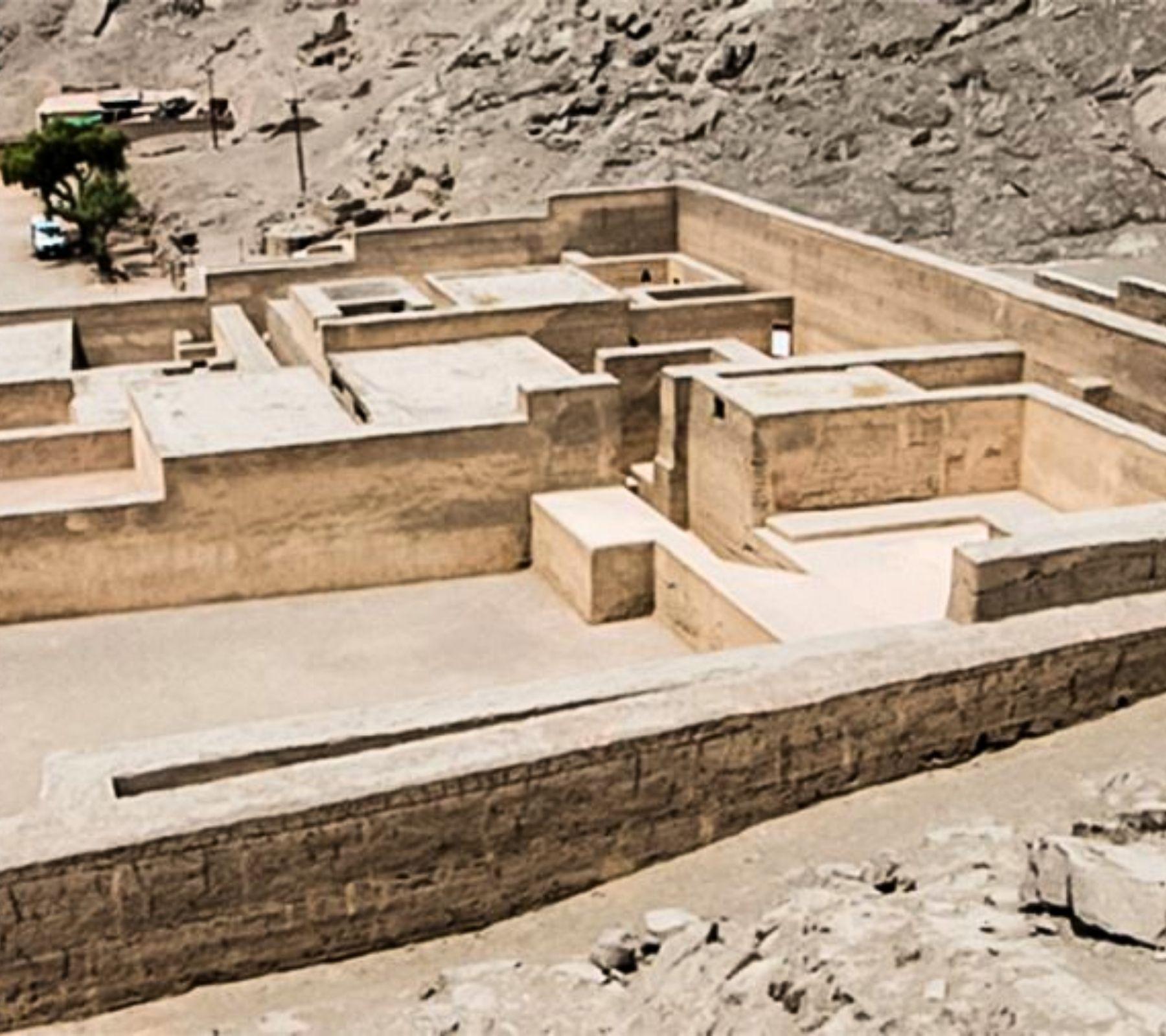
"Arturo Jiménez Borja" Site Museum - Puruchuco
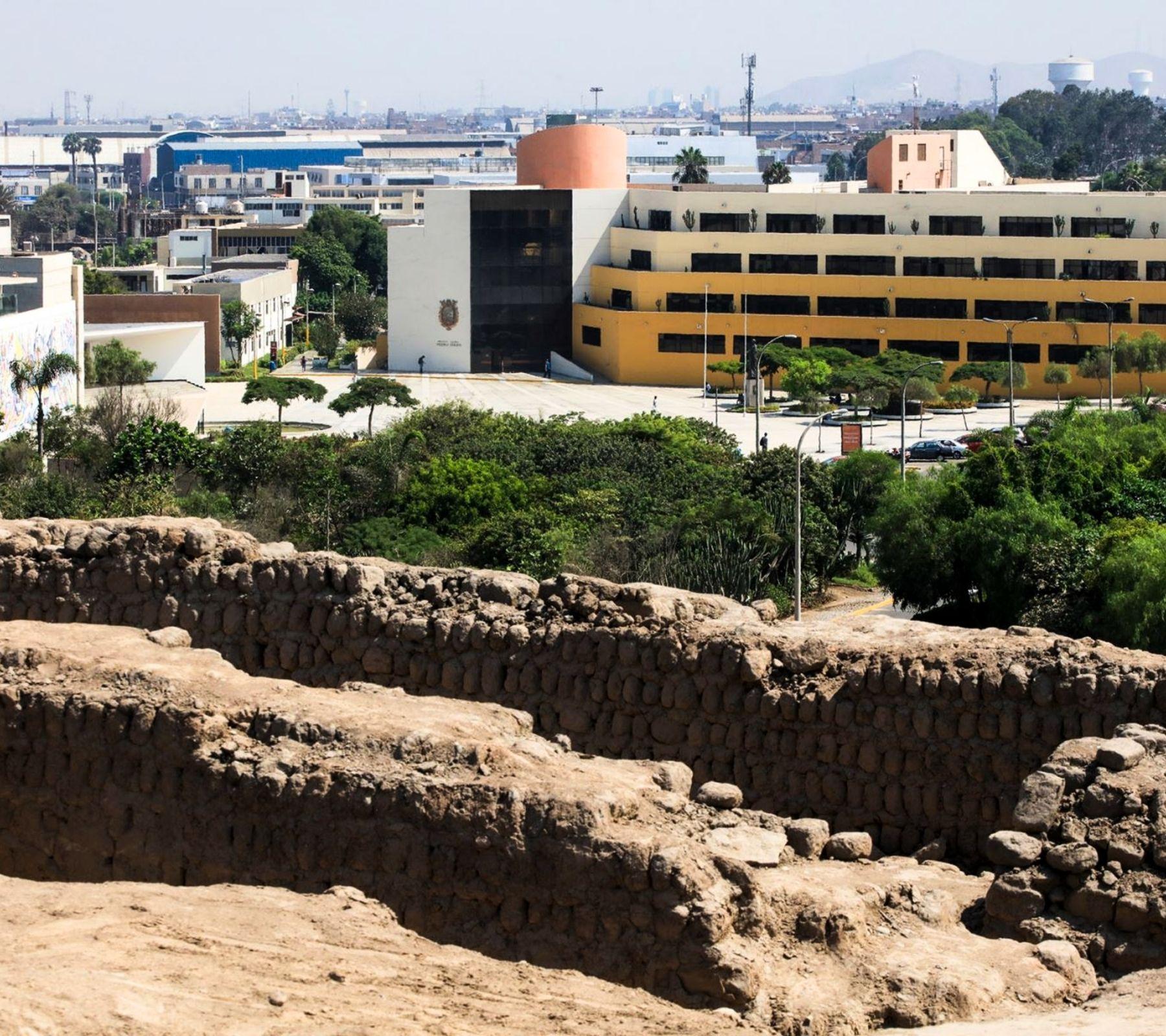
Huaca San Marcos
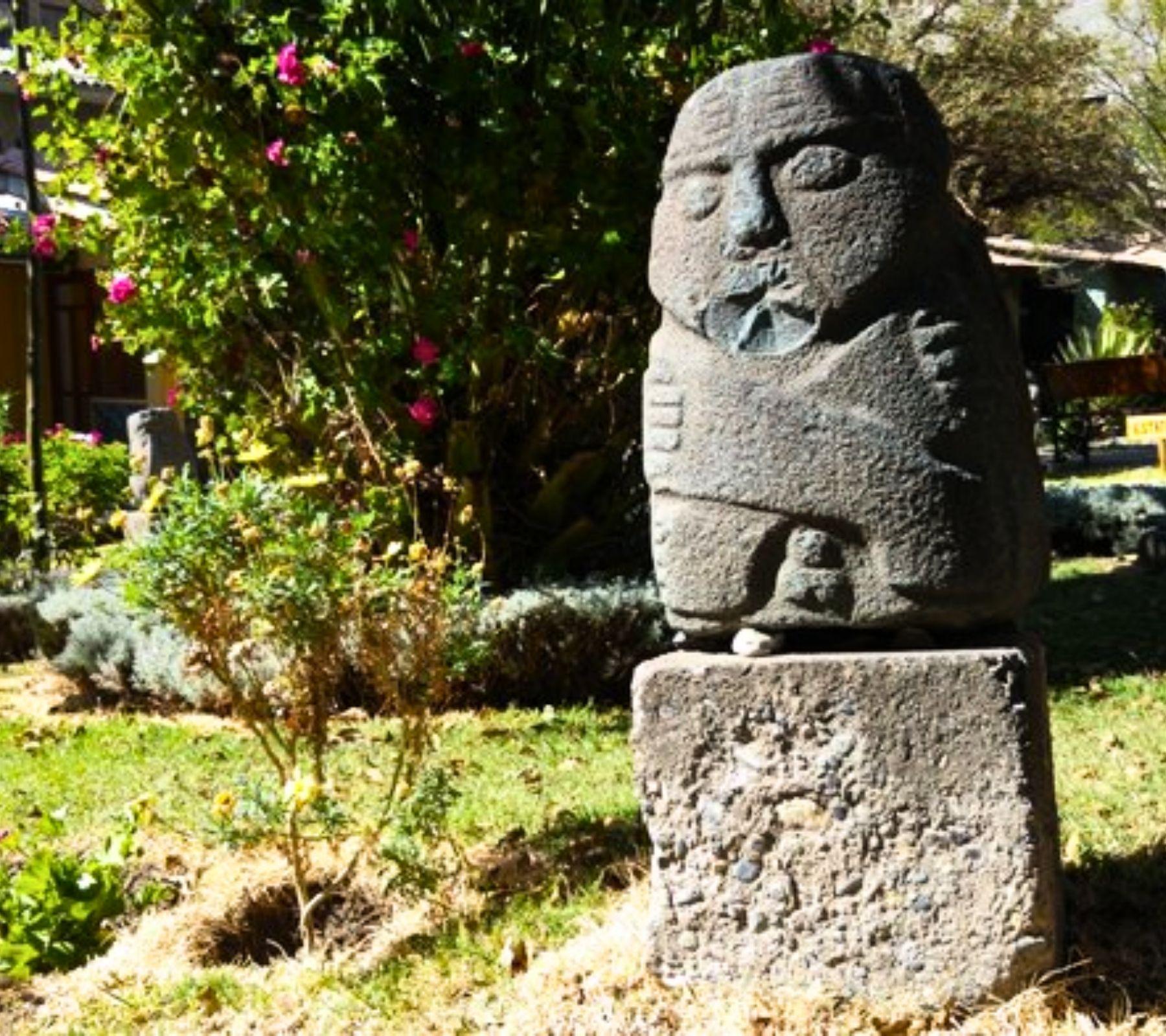
Archaeological Museum of Ancash "Augusto Soriano Infante"
Top destinations, explore top destinations.
Tierras Vivas Travel offers the best all-inclusive Inca Trail to Machu Picchu tours in Peru.
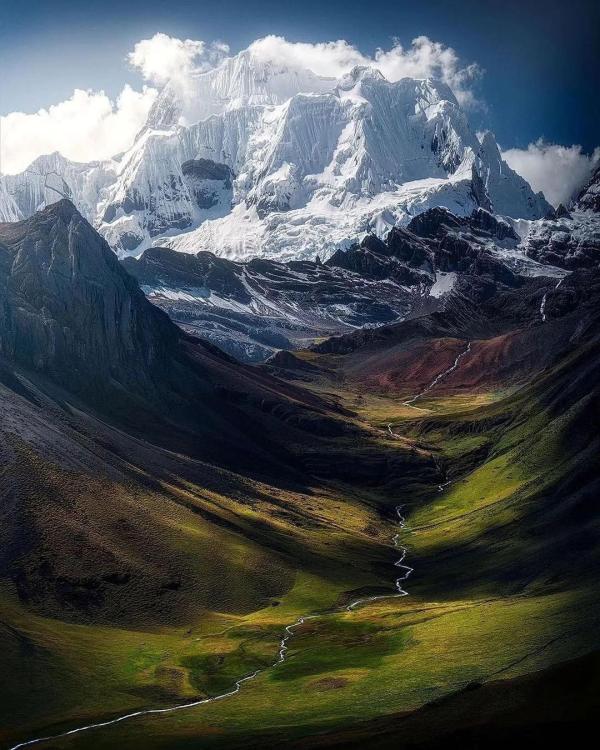
Trekking & Hiking
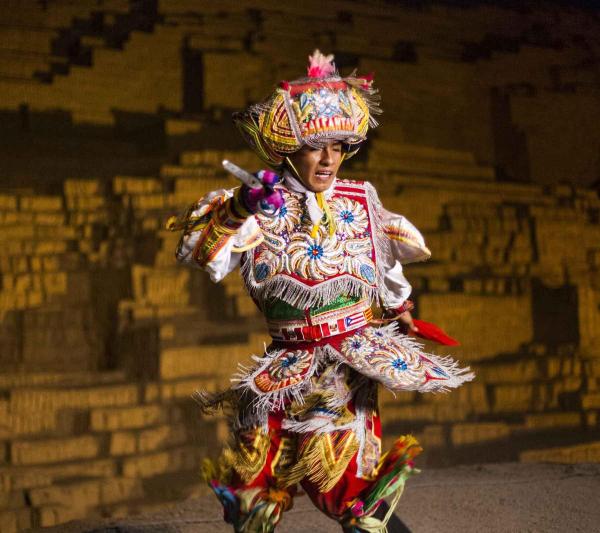
Culture / History
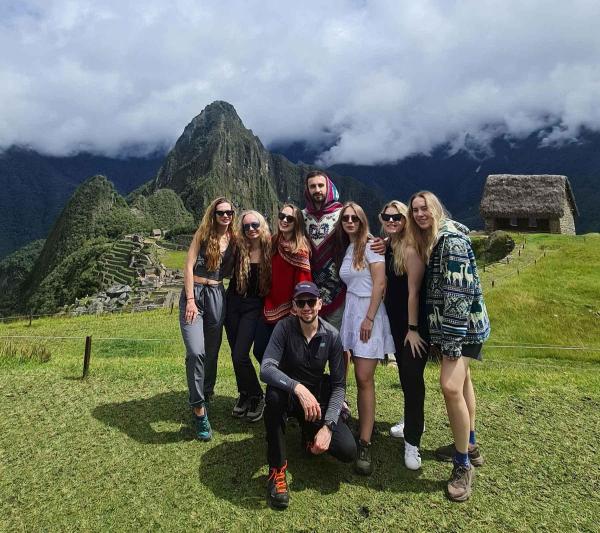
Adventure Holidays
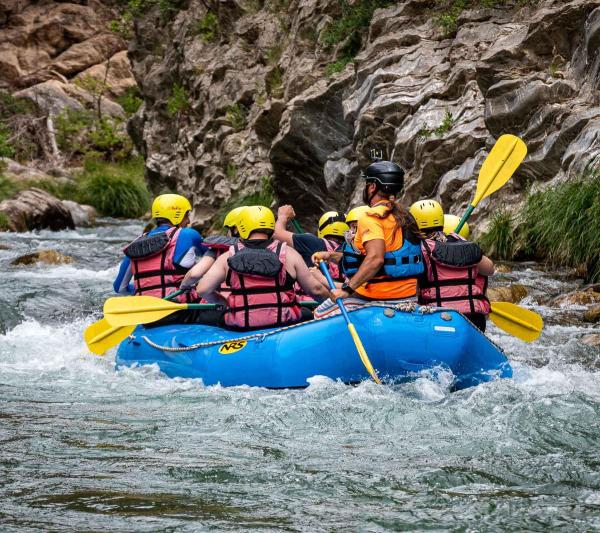
Mixed-Adventure Tours
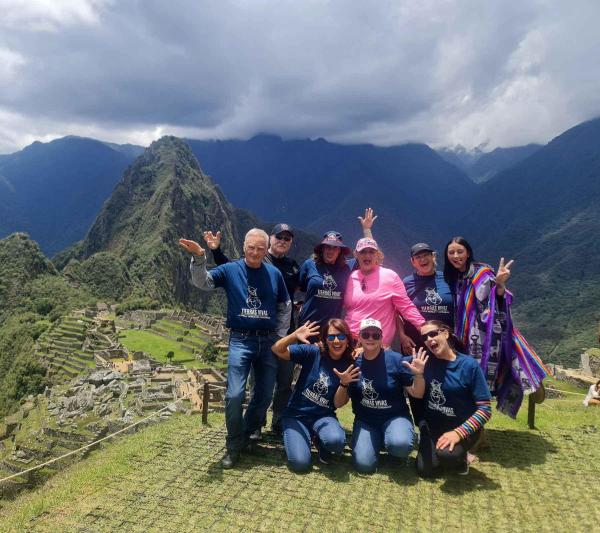
Family Travel
Don't have an account? Register
Already have an account? Login
- ESPAÑOL
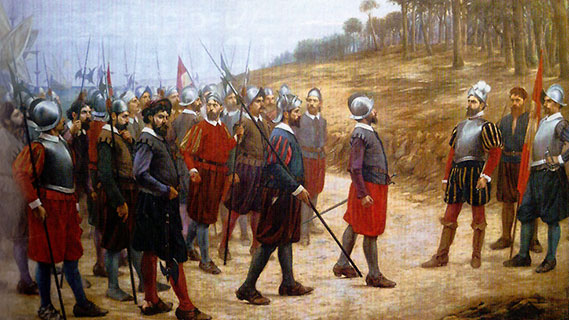
The Conquest of Peru
The first time that the Spaniards arrived to the Peruvian territory was during the second trip of Francisco Pizarro, in 1527. They crossed great part of the north coast: Paita, Sechura, Pacasmayo, until the outlet of the Santa River from where they decided to return to Panama. After this event Pizarro traveled to Spain. The three partners of the conquest Francisco Pizarro, Diego de Almagro and Hernando de Luque were to Toledo city where they got the signature of Toledo Capitulation, on 26 July, 1529, granting Pizarro the title of Governor, General Captain, and the “Adelantado” of the New Castile in Peru.
With official permission of the Spanish crown they went out from Panama to Peru on 20 January 1531, with 180 men and 39 horses. After having spent more than four months in the Puna Island, they disembarked in Tumbes, in April 1532. On 15 August 1532, Pizarro founded the first Spanish city in Peru, San Miguel de Tangarará. Later they went out to Cajamarca where they met the Inca Atahualpa. On 15 November 1532 they arrived to Cajamarca where they asked for an interview with the Inca for the next morning. On 16 November, after a brief interview in the Main Square, the Inca was captured and thousands Indians were murdered. Atahualpa had gone with an unarmed army minimizing the force of the Spaniards who helped by enemy groups of the Inca were able to destroy them.

Atahualpa was prisoner for almost nine months. He had offered to fill two rooms with silver and one room with gold in exchange for his freedom. However, he was deceived and finally, Atahualpa was murdered in the Main Square of Cajamarca on 26 July 1533. Initially, he was condemned to be burnt, but when he accepted the baptism the pain was changed by the garrote. The Spaniards distributed a considerable booty; corresponding to the Spanish monarchy the fifth part (fifth King).
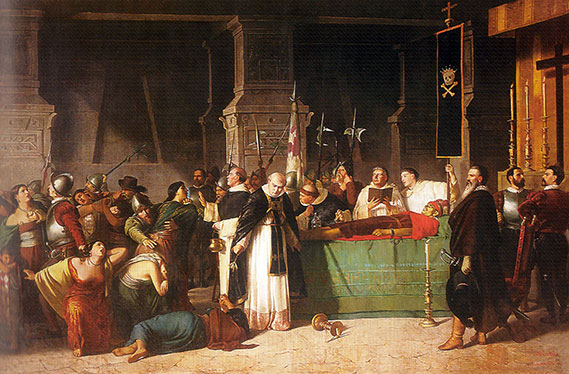
After these events Pizarro decided to go to Cusco, leaving on 11 August 1533. In the route, in the town of Jaquijahuana appeared Manco Inca Yupanqui, son of Huayna Cápac who claimed the rights of inheritance. Pizarro proclaimed him as Inca and Lord of the Four Parts of the Empire. On November 14, 1533, the Spaniards with the new Inca arrived to Cusco, the town received Pizarro with joy, he was considered like the god Huiracocha “The maker of the world” and avenging of death of the Inca Huáscar.
Pizarro founded Cusco like Spanish city four months later, on March 23, 1534. After on April 25, 1534, it was founded the city of Jauja like capital of the government. Manco Inca, after to know the real intentions of the Spaniards in Peru, organized a rebellion that finished with the fence of Cusco, on May 3, 1536. The fight was decided in favor of the Spaniards who took the fortress of Sacsayhuaman on May 16. For this, the Spaniards had like allied to the Huancas, Cañaris, Chachapoyas, Tarmas, Yauyos and Chancas. A hero of this fight was the general Cahuide who preferred to fall down from the high of the fortress before to be captured.
Diego de Almagro had failed in his expedition to Chile. Despaired by wealth captured Gonzalo Pizarro and Alonso de Alvarado that had arrived from Chachapoyas. The Almagro plan was to take possession of Cusco. However, while he traveled to Chincha the prisoners escaped. On April 6, 1538 Almagro fought against Hernando Pizarro in Salinas, very near to Cusco. Finally, Diego de Almagro was taken prisoner and executed in the garrote.
After this success, the son of Diego de Almagro “El Mozo” directed to the Almagro group in their desire of vengeance. This was the group that finally in Lima murdered Francisco Pizarro June 26 1541; the pretext was that Francisco Pizarro planned to kill Almagro “El Mozo.” However, the end of “El Mozo” was close, because it was captured and executed by the troops headed by Cristóbal Vaca de Castro, sent by the king to put order. The viceroyalty of Peru, was established on November 20, 1542, designating as first viceroy to Blasco Núñez de Vela. But he was made prisoner and executed in Quito for the rebellious group headed by Gonzalo Pizarro. The first Viceroy's successor was Pedro de la Gasca, his mission was to capture Gonzalo Pizarro. In the battle of Jaquijahuana, (April 9, 1548) his mission was completed. Gonzalo Pizarro was beheaded and buried in the La Merced Church in Cusco, for chances of the destination was buried next to two of his enemies, Diego de Almagro and his son “El Mozo.”
Reservations
E-mail: [email protected] Call us:+51 990724000 +51 949488442 Phone: 044 - 250000 Office: San Martín 455 - Trujillo Historic Center
Book with Pay Pal
Stay in touch.
- Salkantay Mountain
- Machu Picchu
- Ollantaytambo
- Colca Canyon
- Lake Titicaca
- Sacred Valley of the Incas
- Amazon Rainforest
- Nazca Lines
- Choquequirao
- Walking & Trekking Tours
- Short Hikes & Tours
- Cultural Discovery
- Family Holidays
- Pristine Rainforest
- Multi-Adventure Tours
- Peru Travel Packages
- Luxury Holidays Tours
- Inca Trail Alternative Treks
- Tickets, Tours & Guide 2024
- San Martin School
- Reusable snack bags
- Reforestation with Native Trees
- Essentials Peru
- The best time to visit Peru
- What to bring on a Hike
- Things to do in Peru
- Getting to Machu Picchu
- Inca Trail Trek & Tours FAQs
- Camping Equipment
- How to Book & Payment
- Booking terms & conditions
- Coronavirus Travel Policy
Pizarro, the conqueror who defeated 40,000 Inca soldiers with 200 Spaniards
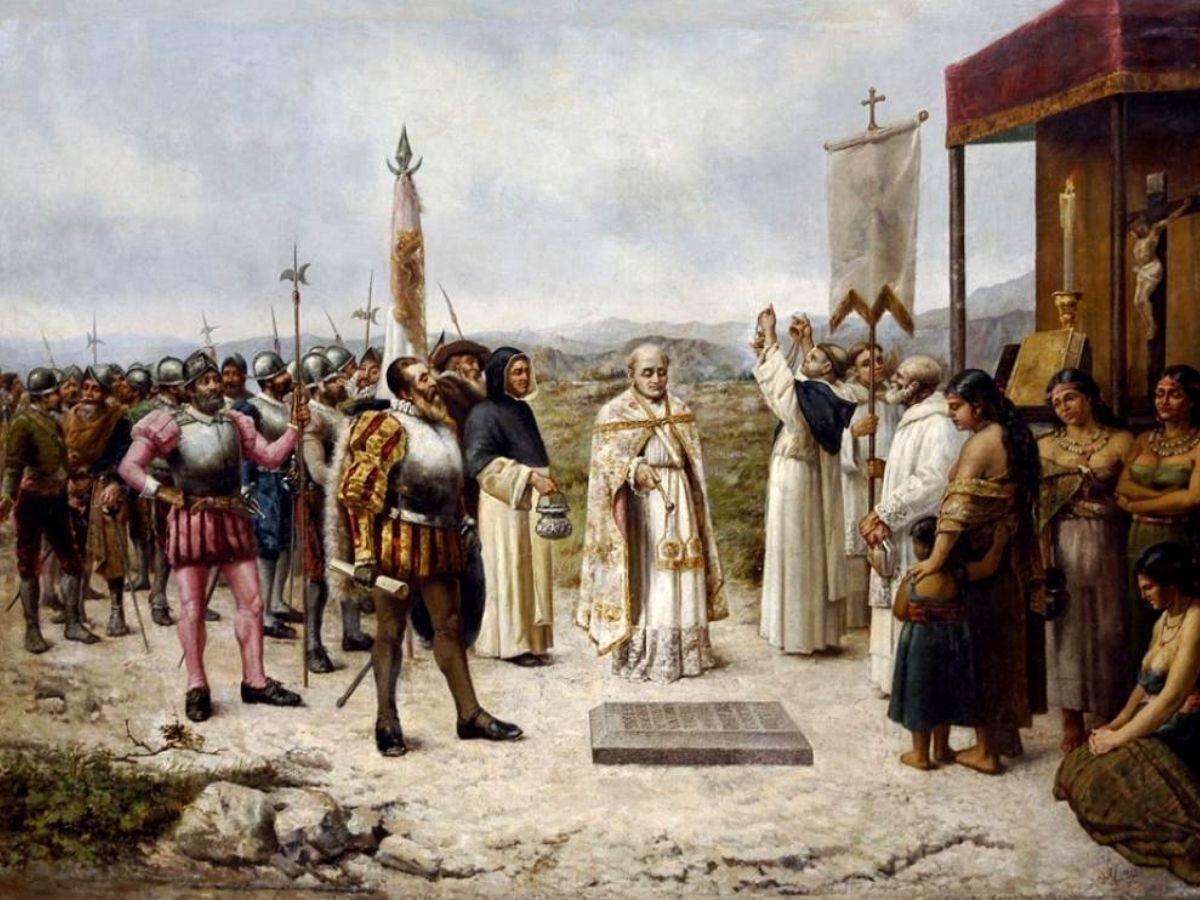
In the years when all the corners of the planet were not yet known, few dared to venture into the unknown and unexplored jungles of the so-called New World. However, among them was Francisco Pizarro, a Spaniard who, by means of sword and sword, led several exploration parties to Peru and came to defeat, along with 200 other Spaniards, an army of almost 40,000 Incas.
And it is that the sixteenth century was one of the most prolific for the Crown, which through Pizarro took possession of a large part of western South America. However, this task was carried out thanks to the sacrifice of hundreds of Spaniards who, with the promise of a better future, entered inhospitable and unexplored territories knowing in advance that death could come at any moment.
Pizarro was a bastard son, a pig farmer and without culture. He was born in Trujillo (Cáceres) Although to this day the exact date on which Francisco Pizarro was born is not yet known, the possibility that it was between 1476 and 1478 has been established. However, what is known for sure is that the place where her mother gave birth was the town of Trujillo, in the heart of Extremadura. In turn, there is consensus in relation to his parents. Specifically, he was the bastard son of Don Gonzalo Pizarro (a war hero who fought under Gonzalo Fernández de Córdoba, the "Great Captain") and Francisca González.
Since he was little, Francisco never stood out for his interest in culture, something that undoubtedly helped his father make the decision to force him to take care of pigs. However, and according to legend, within a few years the animals in his care contracted a serious illness and Francisco, for fear of being blamed for it, fled to Seville when he was only 15 years old. From there he began his military life, as he decided to embark for Italy to fight in the Tercios.
Pizarro would begin his journey through the lands of the New World at the age of 24. Apparently, he traveled to America, like many, seduced by adventure and the possibility of making money. After his arrival he participated as a soldier in various expeditions knowing in advance that, because he was a bastard son and lacked culture, it would be very difficult for him to ascend.
They were difficult years in which the Spaniards tried, at the cost of many lives, to settle in the territory fighting against the natives of the place: the indigenous people. The Indians were exotic. They walked naked, slept in wooden shacks and slept in hammocks. They were hairless, shorter than Spaniards, but well proportioned (…) As for the women, they were half-length uncovered up (…) The virgins showed their bodies entirely naked, ”determines the writer and law graduate Roberto Barletta Villarán in her book «Brief history of Francisco Pizarro».
Everything changed radically for Pizarro during one of the expeditions led by the conqueror Alonso de Ojeda with the intention of taking the Gulf of Urabá (located near Panama). The task, which at first did not seem difficult, was complicated when the local natives, armed with bows and arrows smeared with poison, besieged the Spanish settlement built in the territory: the fort of San Sebastián.
His first military command happened because he seemed immune to plagues. After rough combats in which the Spaniards lost many men, everything got complicated when Ojeda was shot in the leg and had to be evacuated on a ship. At that moment it was when Pizarro, an anonymous soldier for all until now, received, almost by obligation, the first command from him at 32 years of age.
Before leaving, Ojeda ordered Pizarro to resist for 50 days in the fort with the few soldiers that he had. In turn, he determined that, if after that period he did not receive reinforcements, he had the power to flee together with his men in two brigs that he left at his disposal. The Spanish did not hesitate and he prepared to defend the place during that long time.
An epic and deadly defense
As was to be expected, the next two months were an ordeal, as the fighting with the Indians was compounded by food shortages. Such was the despair of the soldiers that they were forced to kill and eat their horses, something unimaginable at that time. To make matters worse, as the days passed, the possibility of receiving reinforcements was reduced.
Finally, once the 50 days were up and no one had come to his aid, Pizarro decided it was time to go. However, a new difficulty arose: the two moored ships did not have the capacity to transport the 70 surviving soldiers. Therefore, he was forced to make a difficult decision.
From that moment on, his tenacity earned him the reputation of a courageous and regal man. In fact, he soon became mayor of Panama, a territory that became the spearhead for the Spanish conquest of Peru.
In 1522 Pizarro decided that it was time to leave for unexplored lands. However, it seems that Panama ended up becoming too small for him, because in 1522 Pizarro decided that it was time to leave for unexplored lands. For this reason, at the age of 32 he decided to associate with two other adventure seekers and head towards Peru, a place where all kinds of stories related to riches circulated that were waiting to be captured by the first conqueror who found them.
The promises of wealth thus captivated the bearded Spanish conqueror, who in 1524 organized a first expedition consisting of two rickety ships, 110 men, 4 horses and even a war dog. However, despite the money invested, this first adventure was not very successful. Despite everything, Pizarro did not give up, and just two years later he planned a new trip in which, with similar resources, he set out again in search of Peru.
A new and curious expedition
This armed trip was planned barely two years later. «The expedition left the port of Panama on January 20, 1531. It carried more than 180 men and a good thirty horses. (…) Knowing the military importance that these animals had then in the fighting against the Indians, it is clear proof that this time the objective was no longer to explore Peru, but rather to conquer it militarily », says Lavallé.
At the command of this contingent, Pizarro stood out, who named his brother Hernando as one of his most prominent officers. It was not long until the Spanish column, which in this case had arquebuses -a weapon much feared by indigenous people-, decided to finally set foot on Peruvian soil. In fact, they planned to invade the Inca civilization taking advantage of the fact that it was mired in a civil war that faced two of its leaders (Atahualpa and Huáscar) for power.
The Spanish conquerors were unaware of the intentions of the Inca leader Atahualpa. In a short time, the Spanish contingent traveled southward a wide stretch of the west coast of South America without finding a mere ounce of gold. To this was added the fact that, when despair began to spread among the soldiers -avid for wealth-, reports arrived that Atahualpa had placed himself in command of a contingent made up of thousands of Incas in the north. Although it is true that the conquerors were unaware of the South American leader's attitude towards them, they could not run the risk that this immense army had been formed to hunt them down.
In search of Atahualpa
Today it is still unknown why the decision was made, but whether it was due to pride, to discover the true intentions of Atahualpa, or to seek luck in the north, Pizarro decided that he would leave with his soldiers to meet the Inca.
Again, and making use of his oratory, he gave a speech to the soldiers in which, according to the chroniclers, he pointed out that, in the event that the Incas were hostile, he trusted that his soldiers would be up to the task. of the circumstances. He would have let his men know that they should be ready for any eventuality. Their small number mattered little in front of the "multitude of people" that surrounded the Inca. Pizarro expected that everyone would show “displays of courage as they were in the habit of being the good Spaniards that they were,” says the author.
The die was cast. The Spanish contingent formed determined to advance towards the city of Cajamarca (located in the northern highlands of Peru), to meet the powerful Inca leader. They did not know if he would fight or not, but they were determined to face any eventuality and they trusted their cannons, their faithful arquebuses -whose noise distressed the Indians- and their horses -animals that the natives believed to be infernal and before whom they fled terrified.
During the long journey, however, all kinds of emissaries from Atahualpa came to meet Pizarro's small army, offering them a multitude of gifts and informing them that his chief intended to meet them in Cajamarca. However, this did not relax the Spanish officers, whose eyes went to the hilt of the sword with each step they took. Such was suspicion that some officers of the column advised the Spanish not to eat or drink anything sent by the enemy king.
Arrival to Cajamarca
On November 15, 1532, the column finally saw the entrance to Cajamarca, a beautiful stone city at 2,700 meters above sea level. «The Spaniards were speechless by the great horror they felt when they saw the extension of the enemy camp. In it there would be about 50,000 people, more than half warriors ", explains, in this case Barletta.
In an attempt to gain confidence and disconcert would-be assailants waiting in hiding in the city, Pizarro ordered his horsemen to gallop into Cajamarca. On the other hand, it was not necessary to use the terror that the Spanish mounts instilled in the Indians, since that part of the city was deserted. Taking advantage of this small advantage, the Spanish military then decided to settle in the central square of the place, which could act as a fortress since it only had two entrances between the buildings.
Cajamarca was a beautiful stone city of about 50,000 people. Curiously, an Inca emissary soon came to meet Pizarro to inform the Spanish that his boss, Atahualpa, was quartered with his men in a nearby complex. There was nothing more to talk about: Pizarro entrusted his brother to go to the place and meet with the South American leader.
However, he also ordered Hernando to execute a curious plan that he had devised in order to defeat the immense Inca army.
After selecting a tiny escort, Hernando appeared before Atahualpa. This, according to Lavallé, was a strong, attractive man in his thirties. Haughty, the Inca leader did not address the Spanish representative directly at any time, but made his words pass first through a nobleman. For their part, the Spaniards did not dismount from the saddle throughout the interview in fear of being attacked.
After drinking a local liquor - not without suspicion on the part of the Spaniards, who continued to maintain the idea that the presents they were given could be poisoned - Hernando asked the Inca leader, as planned, to come to dinner at the makeshift Spanish barracks. After a few seconds, Atahualpa decided not to disappoint the visitors and, although he explained that that day was already late, he would come the next day to eat. The plan was in motion. Quickly, the horsemen returned to tell the news to their leader to start the preparations for the capture.
However, Atahualpa had his own strategy. His plan was simple: he would go before the Spaniards apparently without ill intention, but very determined to take them by surprise, to kill them along with their mounts, and to reduce to slavery those who were saved. For this ambush, he ordered his soldiers to cover their clothing made of palm leaves with wide woolen dresses, "Lavalle points out from his side.
An incredible victory
The next day the Spaniards prepared their ambush. Specifically, Pizarro established that the abduction of Atahualpa would take place in the center of the plaza. In turn, he ordered all of his horsemen to remain motionless until he gave the order to attack. They all entrusted themselves to God, because they knew that their only way to survive in that city was to capture the Inca, otherwise, they would be crushed by the immense enemy army.
Atahualpa arrived at the camp almost at dusk, after multiple insistence. Along with him, he brought an immense entourage and a huge amount of wealth that further enlivened Spanish illusions. On the other hand, thousands and thousands of fighters eager to destroy the conquering Spanish also stood out in his ranks.
Still in apparent peace, the priest of the company was the first to address, with his due translator, Atahulpa. As planned, the religious approached the Inca king to ask him to convert to Christianity and accept the word of God. In fact, and as a symbol of his words, he gave a Bible to the powerful leader, who was sitting on a throne carried by several porters.
Atahualpa, who had never seen a book before, was offered a Bible and threw it on the ground. Atahualpa, who had never seen a book, could not even open it. In fact, shortly after trying to find out how that strange device worked, he threw it to the ground with hatred and later accused the Spanish of having robbed and looted their cities. Apparently, this was too much for the clergyman, who cried out, according to Lavallé, revenge.
Christian patience ran out. Pizarro, armed with his sword, then pounced on Atahualpa with a small entourage to then give the signal to attack. At that moment, the almost fifty Spanish horsemen threw themselves on the enemy soldiers and the crowd that, trying to flee, caused an incredible human avalanche in which hundreds and hundreds of Incas perished.
On his side, while the cannons and arquebuses gave a good account of the enemy troops, Pizarro pounced on the throne of Atahualpa accompanied by a score of soldiers. Almost in a trance, the few troops pierced through and tore apart the Inca's personal guard with their swords, who were finally captured.
Half an hour later the square was in chaos. Most of the enemy troops had fled the city in fear. On the other hand, almost three thousand bodies, an immense part of Atahualpa's soldiers, dotted the ground. It had been a massacre, and it had been perpetrated by only two hundred Spaniards who had put an army of some 40,000 men to flight.
The failed rescue of Atahualpa
The plan had come to a flawless end. After the capture, Pizarro imprisoned Atahulpa in a room, who, in an attempt to be freed, promised the Spaniards to fill that same room with gold and two similar ones with silver if they let him free. Pizarro accepted without delay and, thus, tons and tons of wealth began to arrive in the city for the conquerors.
After several months, the Spaniards managed to get a loot close to 1,200,000 pesos, an enormous amount that had never before been obtained in any of Pizarro's trips. The soldiers were overjoyed during the cast, for they had finally obtained what they had been looking for for years.
Instead, Pizarro retracted his promise and decided to end Atahualpa's life after receiving false and interested opinions from those close to him. Finally, on July 26, 1533, the Spanish officials met and decided to execute the king for, among other things, his betrayal of the Christians.
That same afternoon, the Spanish troops met in the town square to end the life of the president. "The Inca was tied to a tree trunk and bundles of firewood were placed at his feet, since the decision had been made to burn him alive as an idolater," the writer highlights.
Atahualpa received baptism before his death Instead, events took a turn after the Spanish clergyman urged Atahualpa to receive the holy sacraments before dying so as not to perish in sin. “Atahualpa would have asked where the Christians went after his death. Faced with the answer that they were buried in a church, the Inca would then have declared his will to be a Christian. Add Lavallé to the text. Because of this, he was finally baptized and, instead of being burned alive, he drowned.
Pizarro's death
After the feat carried out with his 200 men, luck stopped smiling at Pizarro, who ended up at odds with another of the Spanish conquerors, Diego de Almagro. The confrontation reached such a level that both fought a decisive battle in which the Pizarro troops won.
After the death of Almagro - who was executed after being tried by the Pizarro brothers - a dozen of his supporters attacked Francisco by surprise at his home in Lima on June 26, 1541. Finally, and despite the fact that he defended himself to the end, the old Spanish conqueror fell dead from a stab in the same city he had founded only six years before.
Top seller to Machu Picchu
Machu picchu travel:.
- Machu Picchu Day Trip
- 2 day Train tour to Machu Picchu
- Machu Picchu 2 Day Tours from Cusco
Best Tours in Peru
- 3 Day Inca Trail Hike to Machu Picchu
- Apu Ausangate Trek Peru
- Cheap Rainbow Mountain Cusco Tour
- 7 Day Inca Trail Trek
- 4 Day Jungle Trek to Machu Picchu
- Short Inca Trail 2 Day Hike
- Tours From Cusco to Machu Picchu
- Manu Jungle Tours
- 4 Days Inca Trail to Machu Picchu
- Inti Raymi Festival
- Lares Trek to Machu Picchu 4 Days
- Classic Inca Trail to Machu Picchu 4 Days
- City Tour Cusco Peru
- Sacred Valley Tour from Cusco
- Salkantay Trek 4 Days to Machu Picchu
- Llactapata Inca Trail to Machu Picchu
- Huchuy Qosqo Trek 2 Days
- 2 Days Inca Trail with Camping
- Huchuy Picchu Mountain
If you want to visit Machu Picchu, we recommend you to book your Machu Picchu Entrance Tickets in advance, so you will enjoy your Vacation in Machu Picchu without any problem.

- Francisco Pizarro
- Occupation: Conquistador and Explorer
- Born: Around 1474 in Trujillo, Spain
- Died: June 26, 1541 in Lima, Peru
- Best known for: Conquering the Inca Empire

- He was the second cousin once removed of Hernan Cortez, the conquistador who conquered the Aztecs in Mexico .
- No one is quite sure exactly when Pizarro was born. It was likely between 1471 and 1476.
- The famous explorer Hernando de Soto was part of Pizarro's group that conquered the Inca.
- Francisco was accompanied by his brothers Gonzalo, Hernando, and Juan throughout his campaign to conquer the Inca.
- When Pizarro captured the Inca Emperor his small force of less than 200 men managed to kill over 2,000 Inca and take 5,000 more as prisoners. He had the advantage of guns, cannons, horses, and iron weapons.
- Listen to a recorded reading of this page:
- Roald Amundsen
- Neil Armstrong
- Daniel Boone
- Christopher Columbus
- Captain James Cook
- Hernan Cortes
- Vasco da Gama
- Sir Francis Drake
- Edmund Hillary
- Henry Hudson
- Lewis and Clark
- Ferdinand Magellan
- Juan Ponce de Leon
- Spanish Conquistadores

IMAGES
VIDEO
COMMENTS
Francisco Pizarro, Marquess of the Atabillos ( / pɪˈzɑːroʊ /; Spanish: [fɾanˈθisko piˈθaro]; c. 16 March 1478 - 26 June 1541) was a Spanish conquistador, best known for his expeditions that led to the Spanish conquest of the Inca Empire . Born in Trujillo, Spain to a poor family, Pizarro chose to pursue fortune and adventure in the ...
Francisco Pizarro was born in 1474 in Trujillo, Spain. His father, Captain Gonzalo Pizarro, was a poor farmer. ... Pizarro acted as captain for Vasco Núñez de Balboa on the trip where Balboa ...
Francisco Pizarro (born c. 1475, Trujillo, Extremadura, Castile [Spain]—died June 26, 1541, Lima [now in Peru]) was a Spanish conqueror of the Inca empire and founder of the city of Lima.. Early life. Pizarro was the illegitimate son of Captain Gonzalo Pizarro and Francisca González, a young girl of humble birth. He spent much of his early life in the home of his grandparents.
Francisco Pizarro (c. 1478-1541) was a conquistador who led the Spanish conquest of the Inca civilization from 1532. With only a small group of men, Pizarro took advantage of his superior weapons and the fact that the Incas were weakened by civil war and the arrival of European diseases to take over the largest empire in the world.. Pizarro captured the Inca capital of Cusco, executed the Inca ...
Francisco Pizarro: Journeys Through Peru and South America. New York: Crabtree Publishing Company, 2005. Gallery. Pizarro preparing to leave on his third expedition in 1530. The Mariners' Museum E141 .B91 Map showing Pizarro's January 1531 - November 1533 route from Panama to Cuzco. William Robert Shepherd, Public domain, via Wikimedia ...
In 1513, Francisco Pizarro joined Vasco Núñez de Balboa in his march to the "South Sea," during which Balboa discovered the Pacific Ocean. In 1532, Pizarro and his brothers conquered Peru. In ...
How to Use the Map. After opening the map, click the icon to expand voyage information. You can view each voyage individually or all at once by clicking on the to check or uncheck the voyage information. Click on either the map icons or on the location name in the expanded column to view more information about that place or event. Click the ...
Pizarro, Francisco (1471-1541) Spanish conquistador of the Inca empire of Peru. He served under Hernán Cortés and led expeditions to South America (1522-28). Having gained royal support, he led 180 men to Peru in 1530. They captured and later murdered the Inca leader Atahualpa, and took Cuzco, the capital (1534).
Updated on June 19, 2019. Francisco Pizarro (ca. 1475-June 26, 1541) was a Spanish explorer and conquistador. With a small force of Spaniards, he was able to capture Atahualpa, emperor of the mighty Inca Empire, in 1532. Eventually, he led his men to victory over the Inca, collecting mind-boggling quantities of gold and silver along the way.
Francisco Pizarro Gonzalez was the illegitimate son of a Spanish infantry colonel and was a distant cousin of Hernan Cortes. Pizzaro was excited by reports of riches being found in the New World and the success of his cousin. ... One of his more memorable trips was with Vasco Nunez de Balboa on his journey to the Pacific. Pizarro participated ...
He Relied Greatly on His Brothers . On his 1528-1530 trip to Spain, Pizarro got royal permission to explore and conquer. But he brought back to Panama something even more important — his four half-brothers.Hernando, Juan, and Gonzalo were his half-brothers on his father's side: on his mother's side was Francisco Martín de Alcántara.
Francisco Pizarro: Routes and Voyages. In 1502, Francisco Pizarro returned to Spain. During that year, Fray Nicolas de Ovando would go to the island of Hispaniola, which was recently discovered by ...
Describes the life and travels of Pizarro, from his early days as a soldier for Spain to his eventual conquest of Peru Includes index A conquistador -- The known world -- To the Pacific -- Pizarro's voyages -- Life at sea -- The Inca empire -- Pizarro and the Inca -- Spanish conquest -- Pizarro's legacy
Francisco Pizarro. In 1478, Pizarro was born in Trujillo, Spain. It is said that he was a "swine handler" as a boy. That means he performed tricks with pigs. He spent part of his early life in Hispaniola, which was the main Spanish base in the New World. Pizarro became friends with Vasco Nunez de Balboa and served as his chief lieutenant ...
Pizarro left Spain with his brothers to go to Panama and get ready for the trip. In January 1530, Pizarro left Panama for Peru with 180 men and about 30 horses.
This Day In History: 11/16/1532 - Pizarro Traps Atahualpa. On November 16, 1532, Francisco Pizarro, the Spanish explorer and conquistador, springs a trap on the Incan emperor, Atahualpa. With ...
Francisco Pizarro, a Spaniard who, by sword and morion, led several exploration parties to Peru and came to defeat, along with 200 other Spaniards. Pizarro ... an enormous amount that had never before been obtained in any of Pizarro's trips. The soldiers did not fit in with joy during the distribution, because at last, they had obtained what ...
The Conquest of Peru. The first time that the Spaniards arrived to the Peruvian territory was during the second trip of Francisco Pizarro, in 1527. They crossed great part of the north coast: Paita, Sechura, Pacasmayo, until the outlet of the Santa River from where they decided to return to Panama. After this event Pizarro traveled to Spain.
Pizarro accepted without delay and, thus, tons and tons of wealth began to arrive in the city for the conquerors. After several months, the Spaniards managed to get a loot close to 1,200,000 pesos, an enormous amount that had never before been obtained in any of Pizarro's trips.
Francisco Pizarro grew up in Trujillo, Spain. His father, Gonzalo Pizarro, was a colonel in the Spanish army and his mother, Francisca, was a poor woman living in Trujillo. Francisco grew up with little education and never learned how to read or write. ... The second trip in 1526 went better as Pizarro reached the Tumbez people on the borders ...
In the years after his conquest, Pizarro lived high on the hog on his riches and fame in the new town of Lima, which he helped establish. During this time, Pizarro and his brothers began fighting ...
Discover Francisco Pizarro Statue in Lima, Peru: A monument to the conquistador became increasingly controversial in the very city that he founded. Trips Take your next trip with Atlas Obscura!